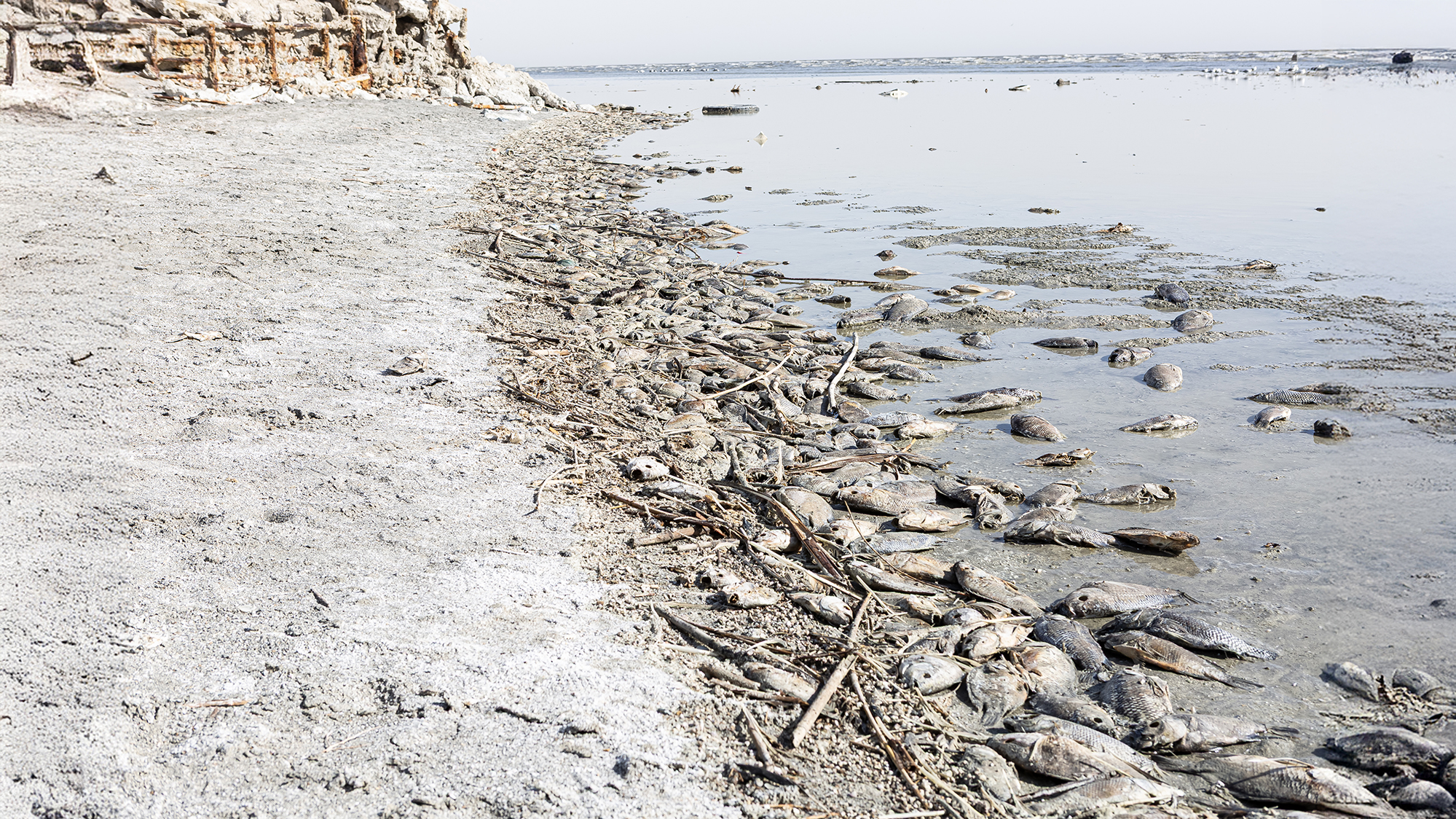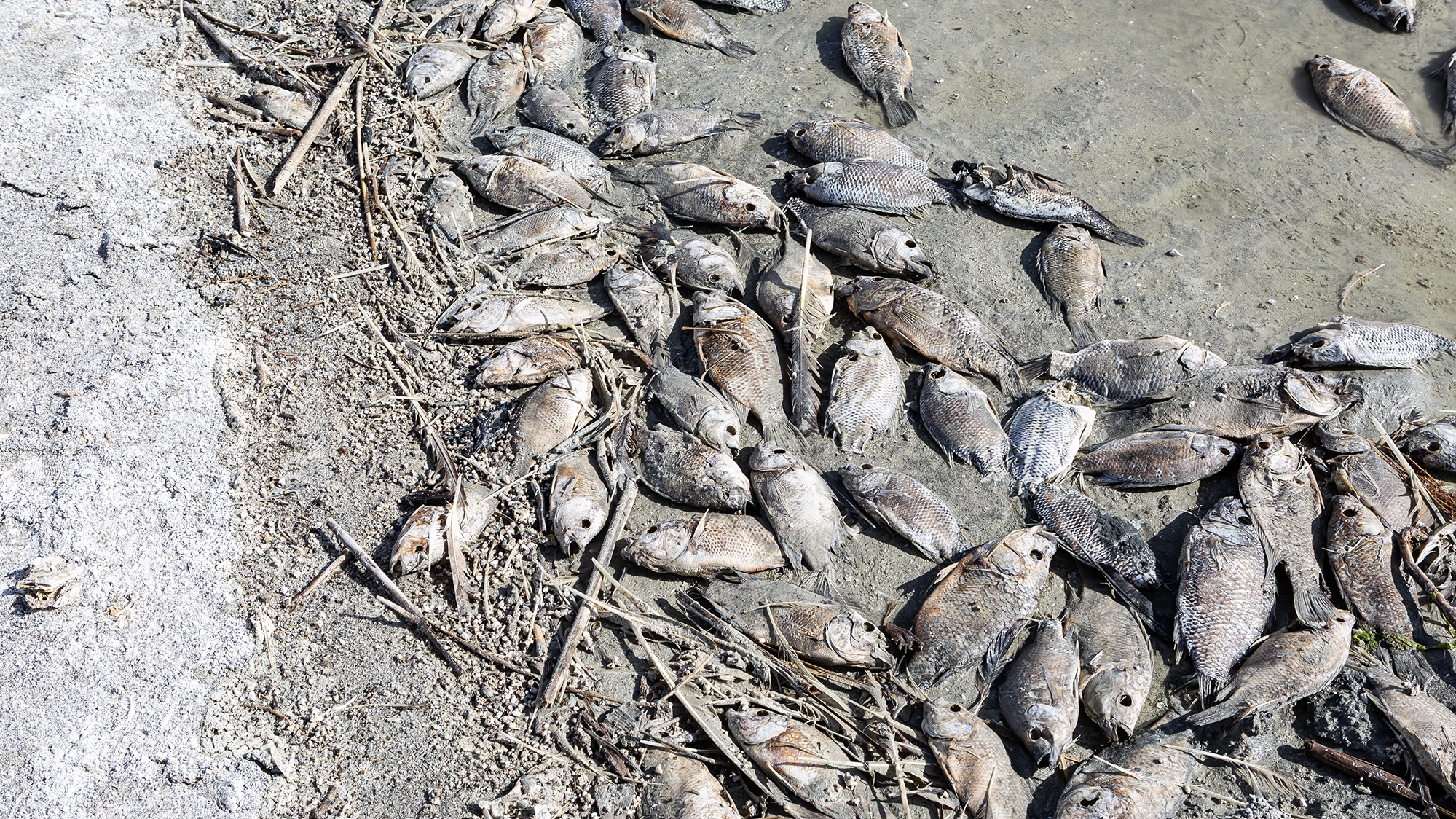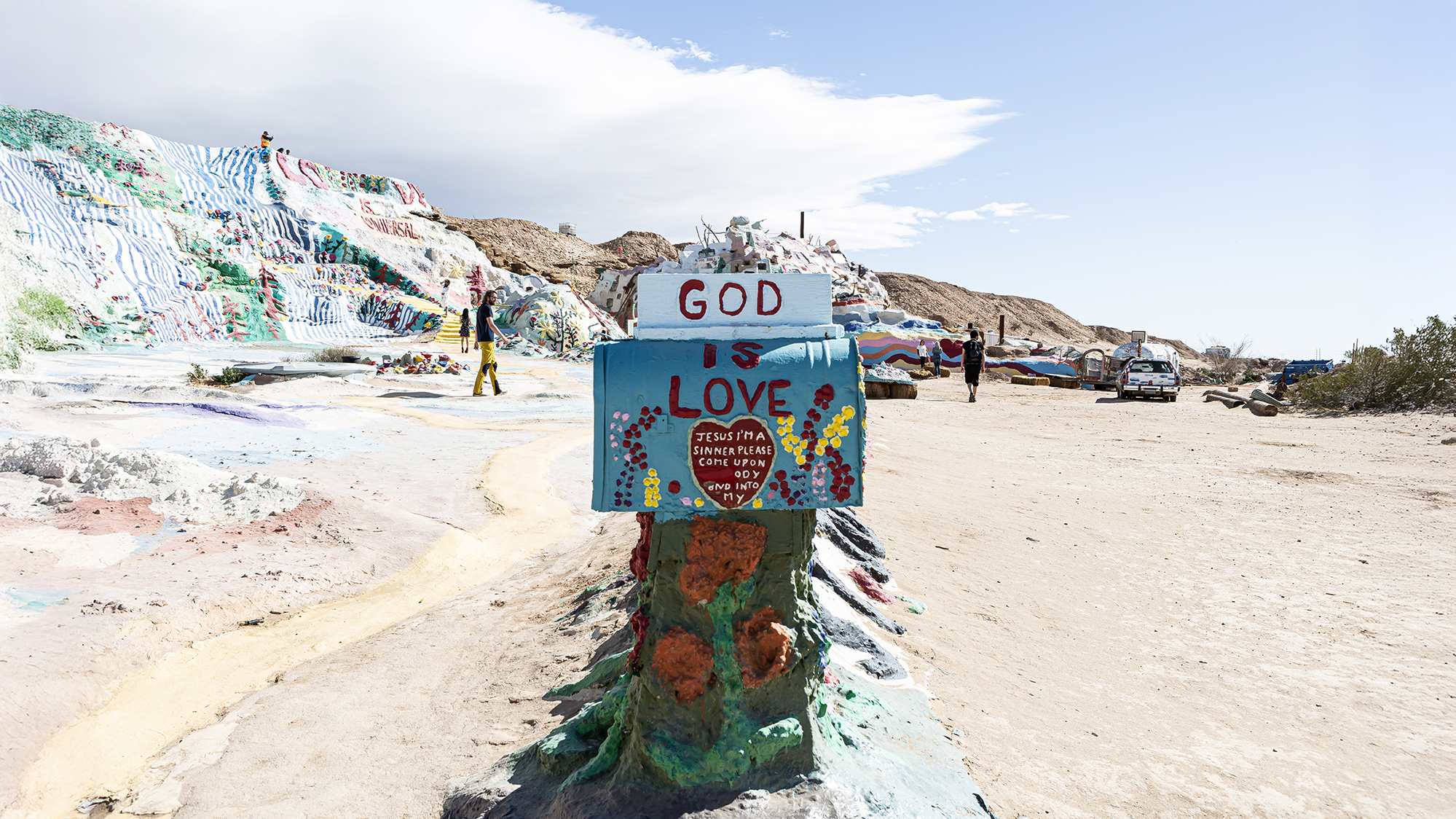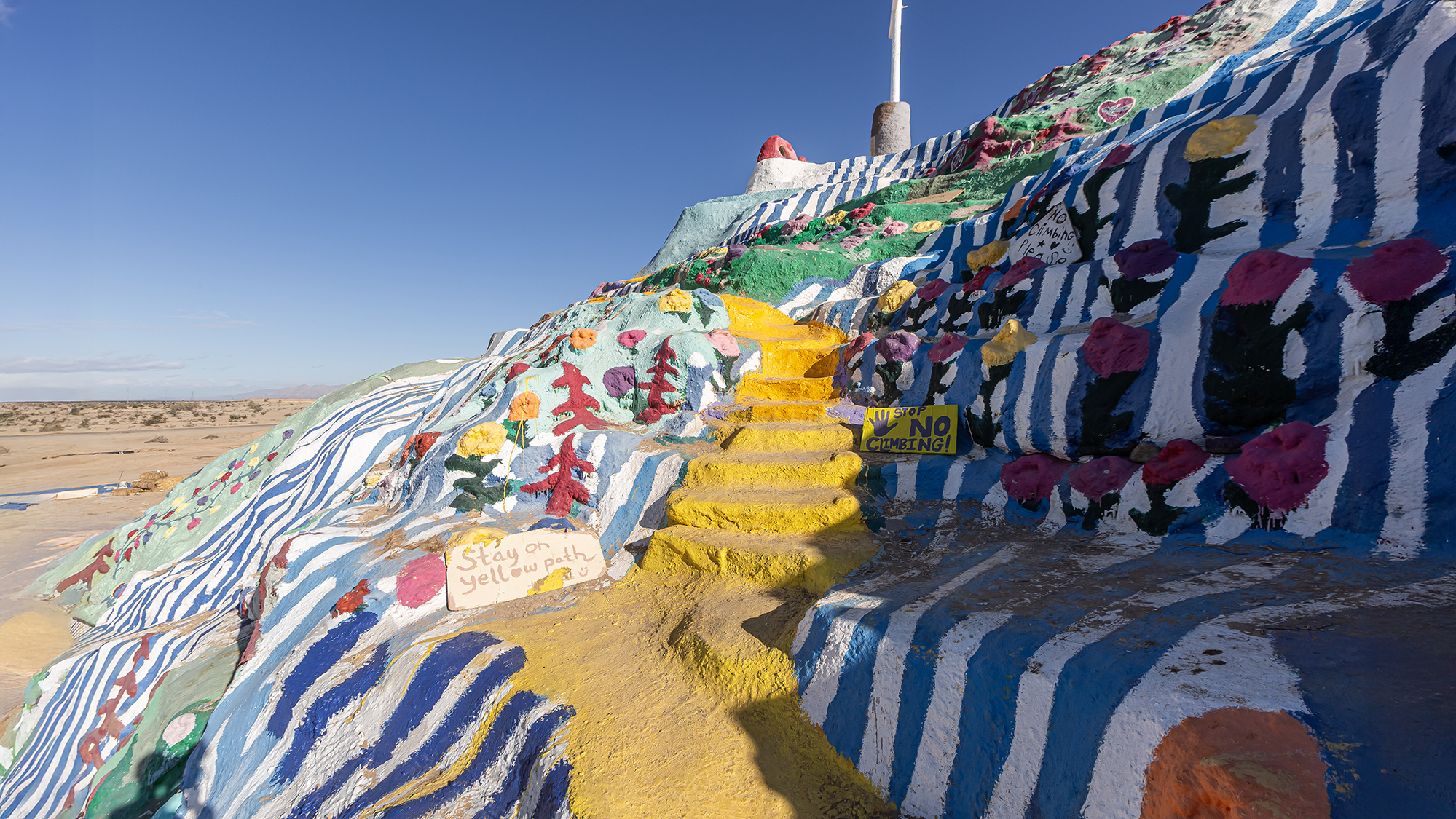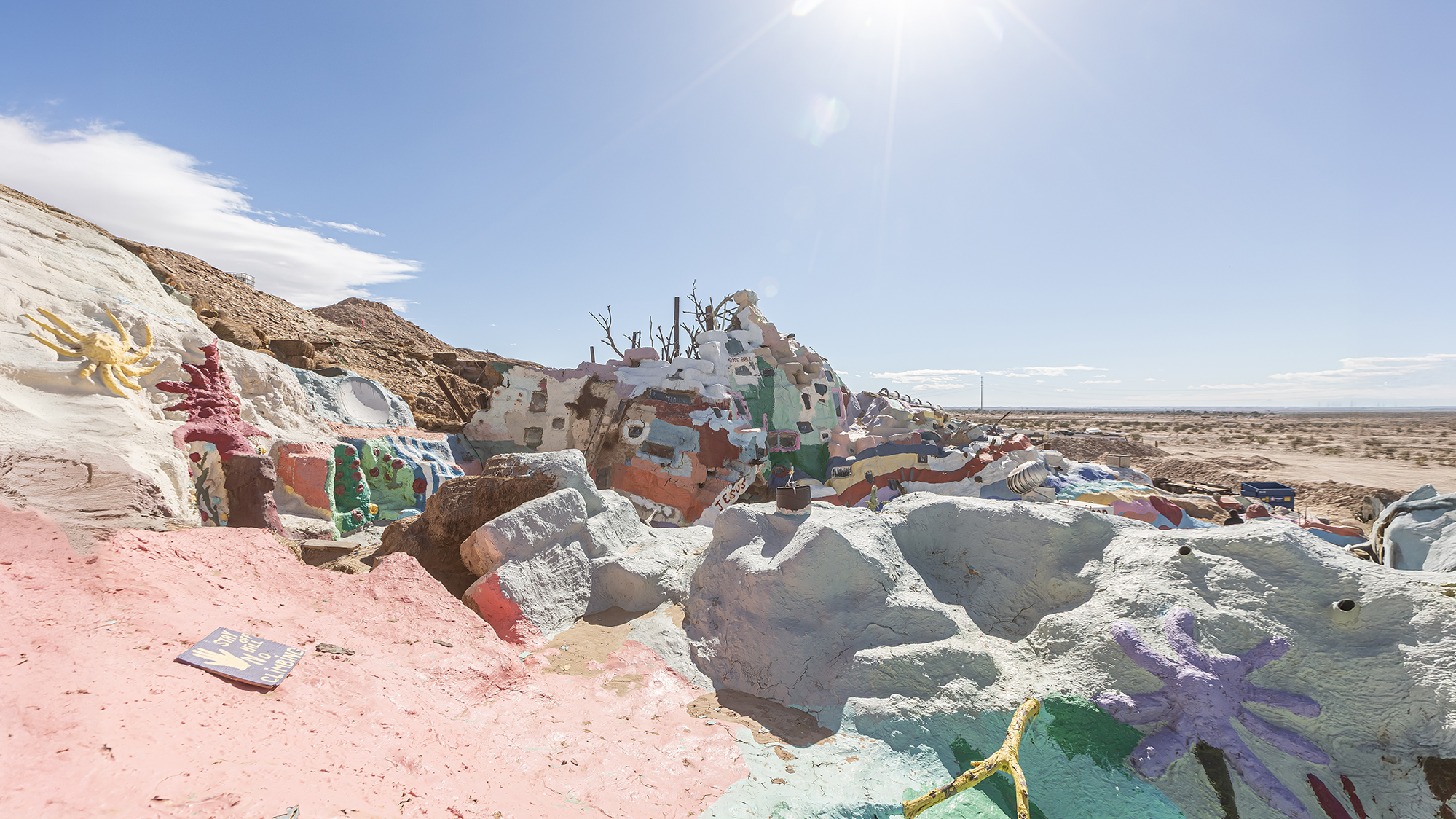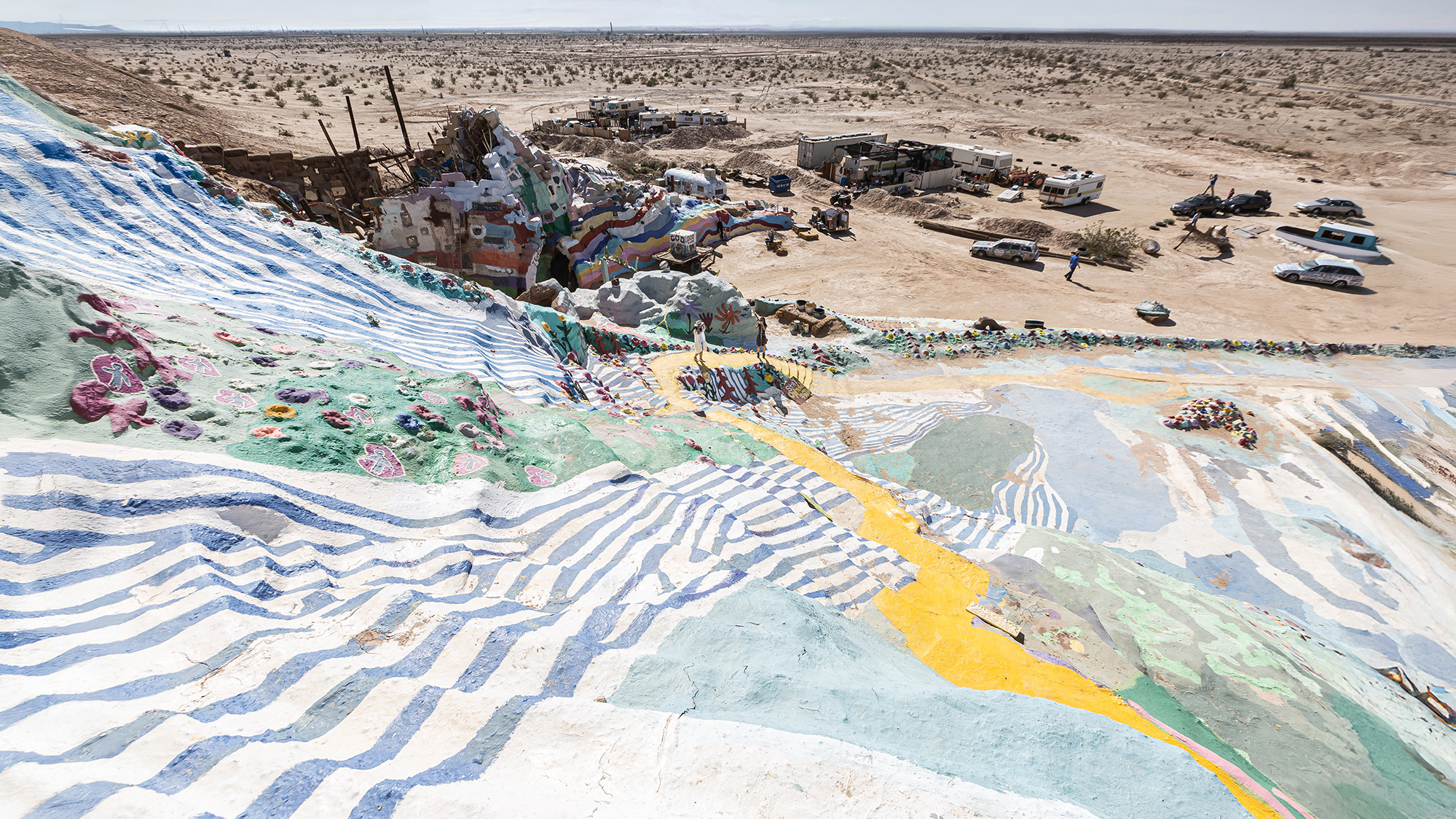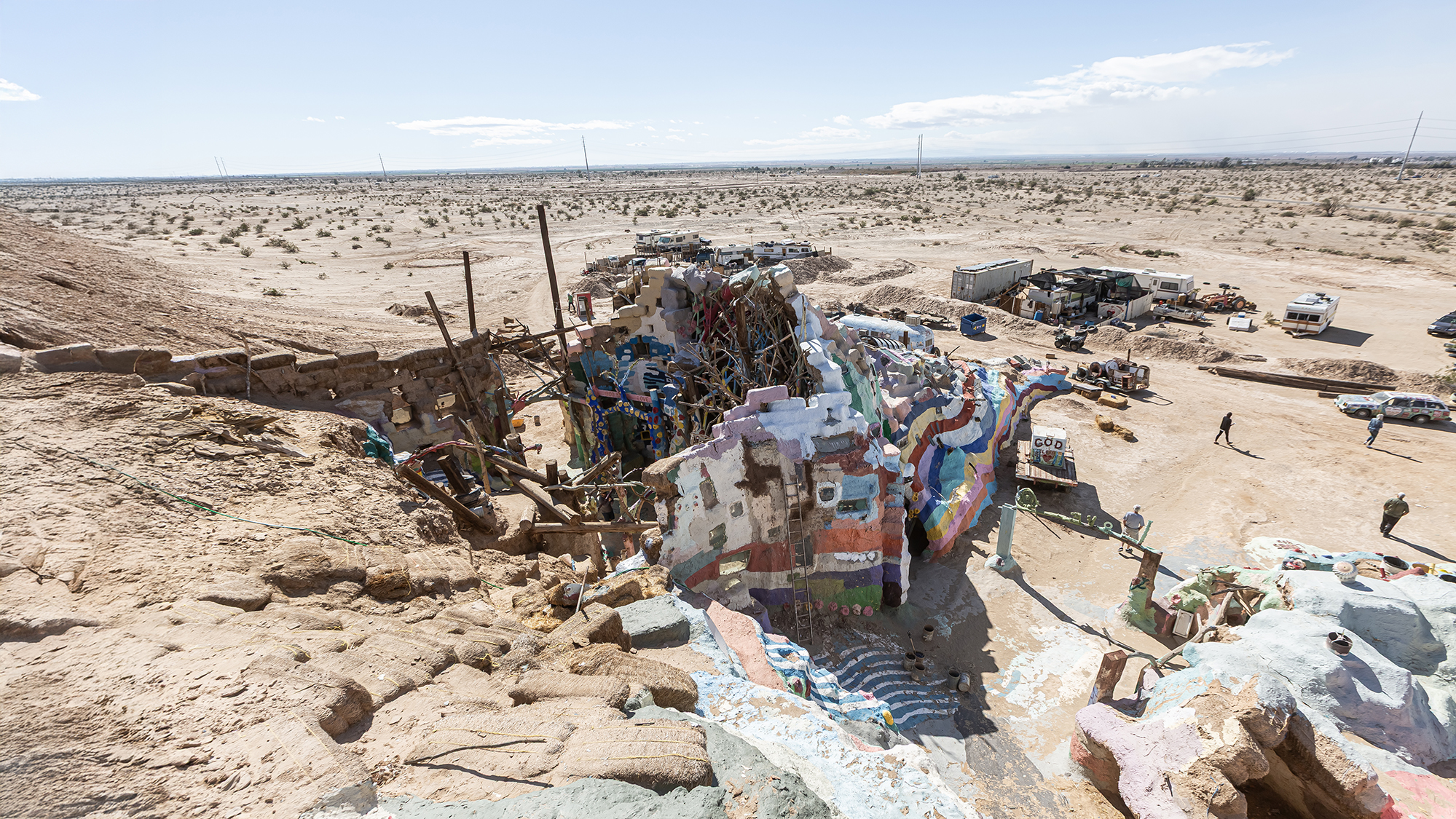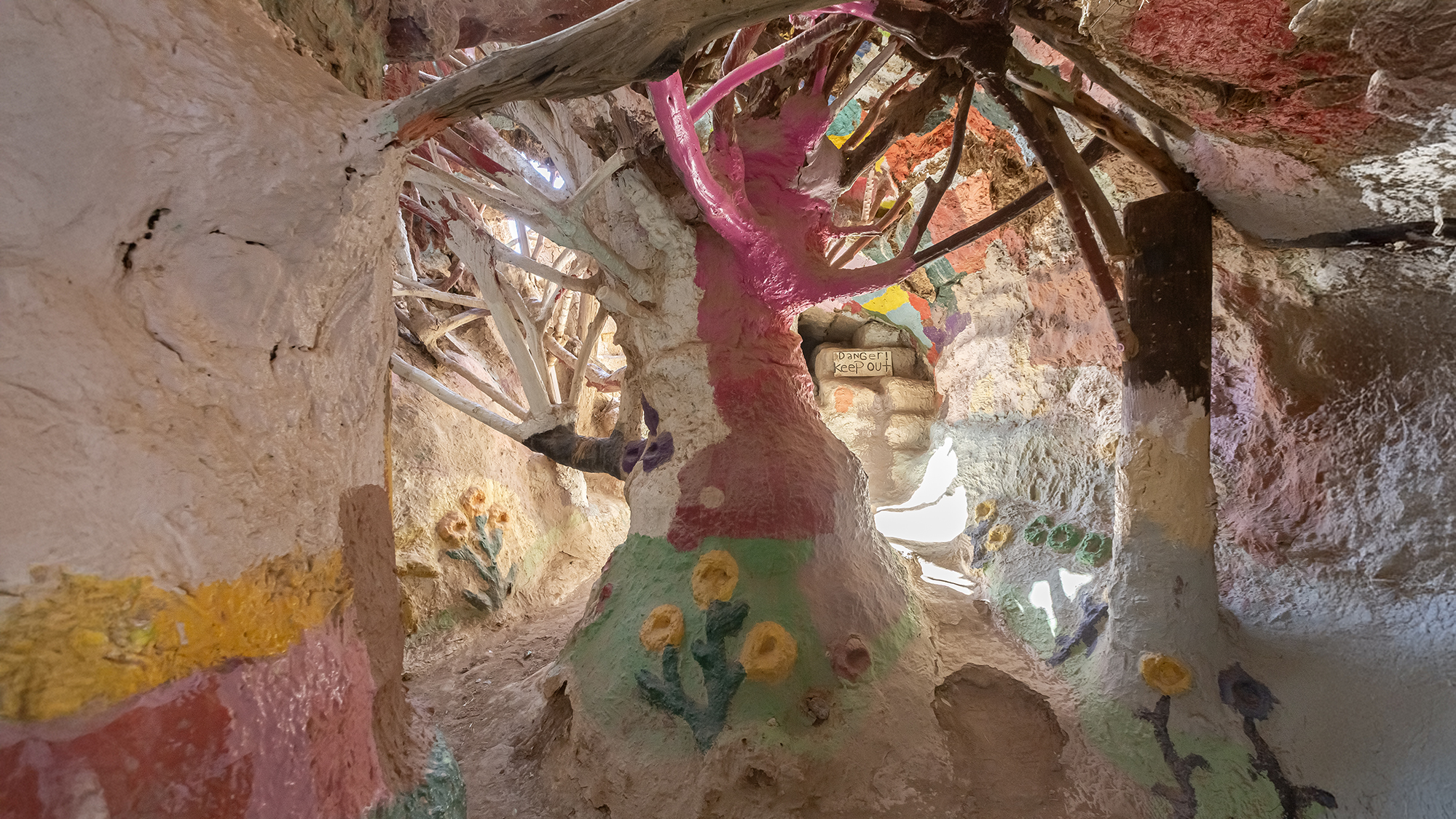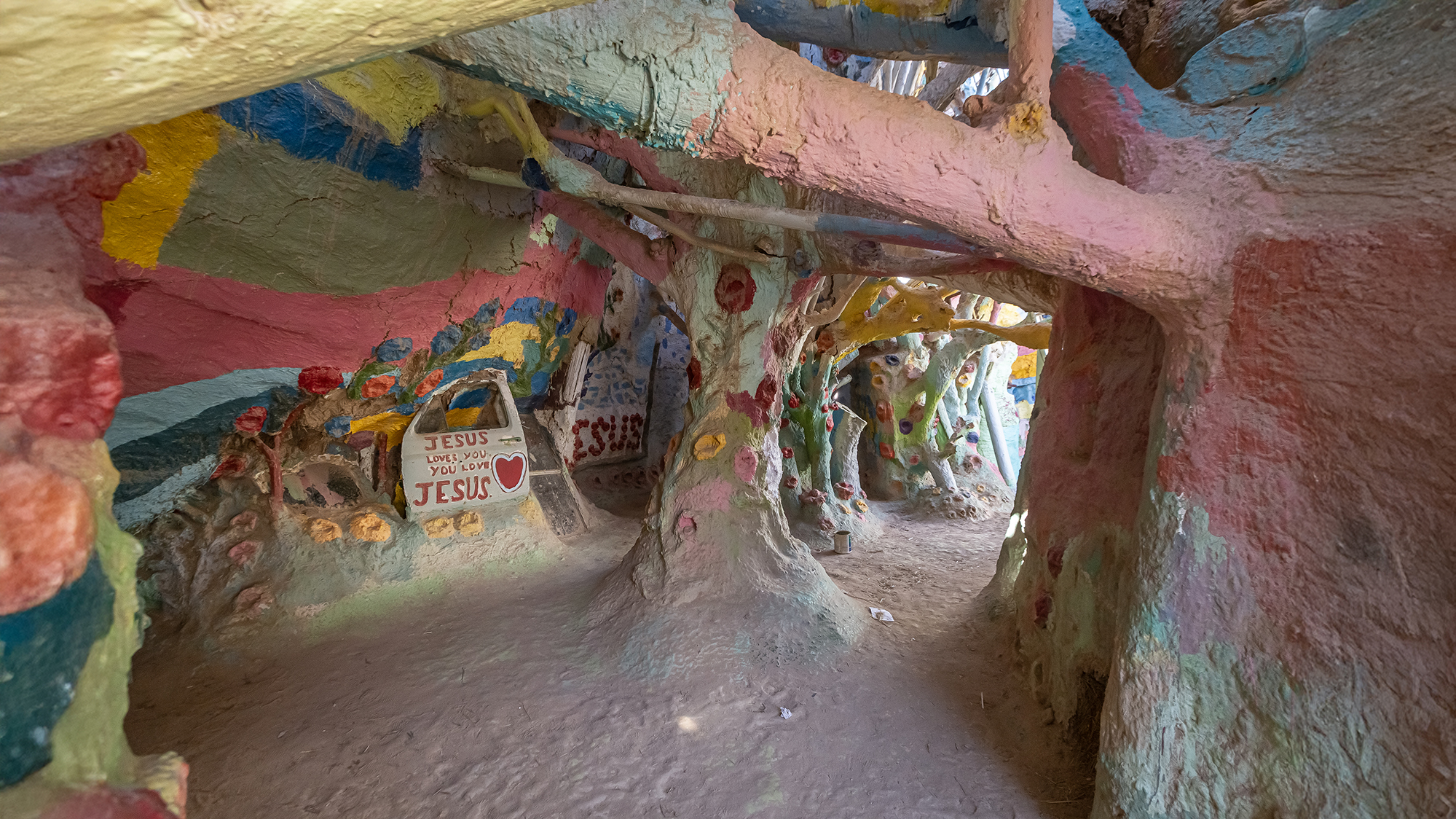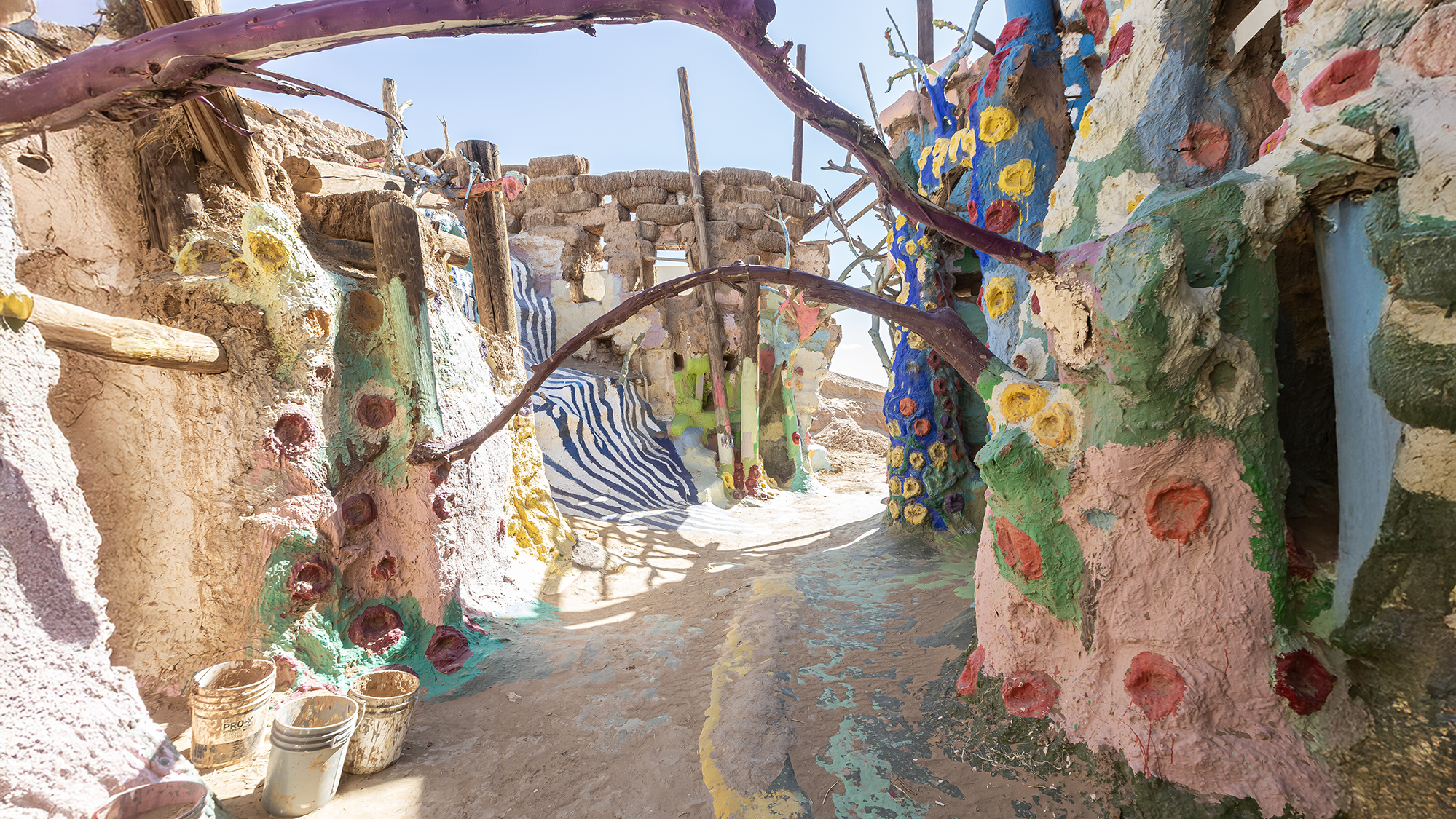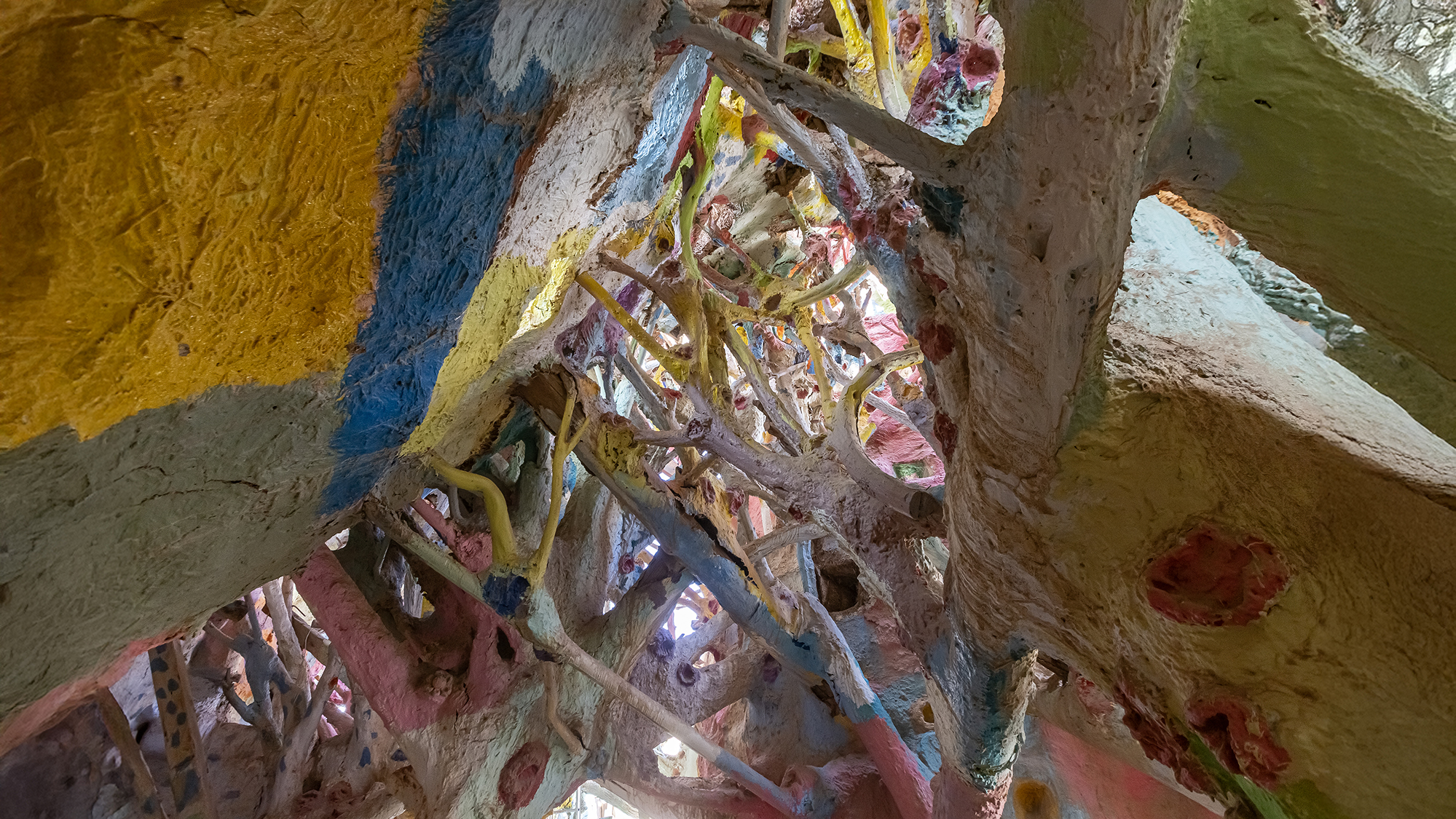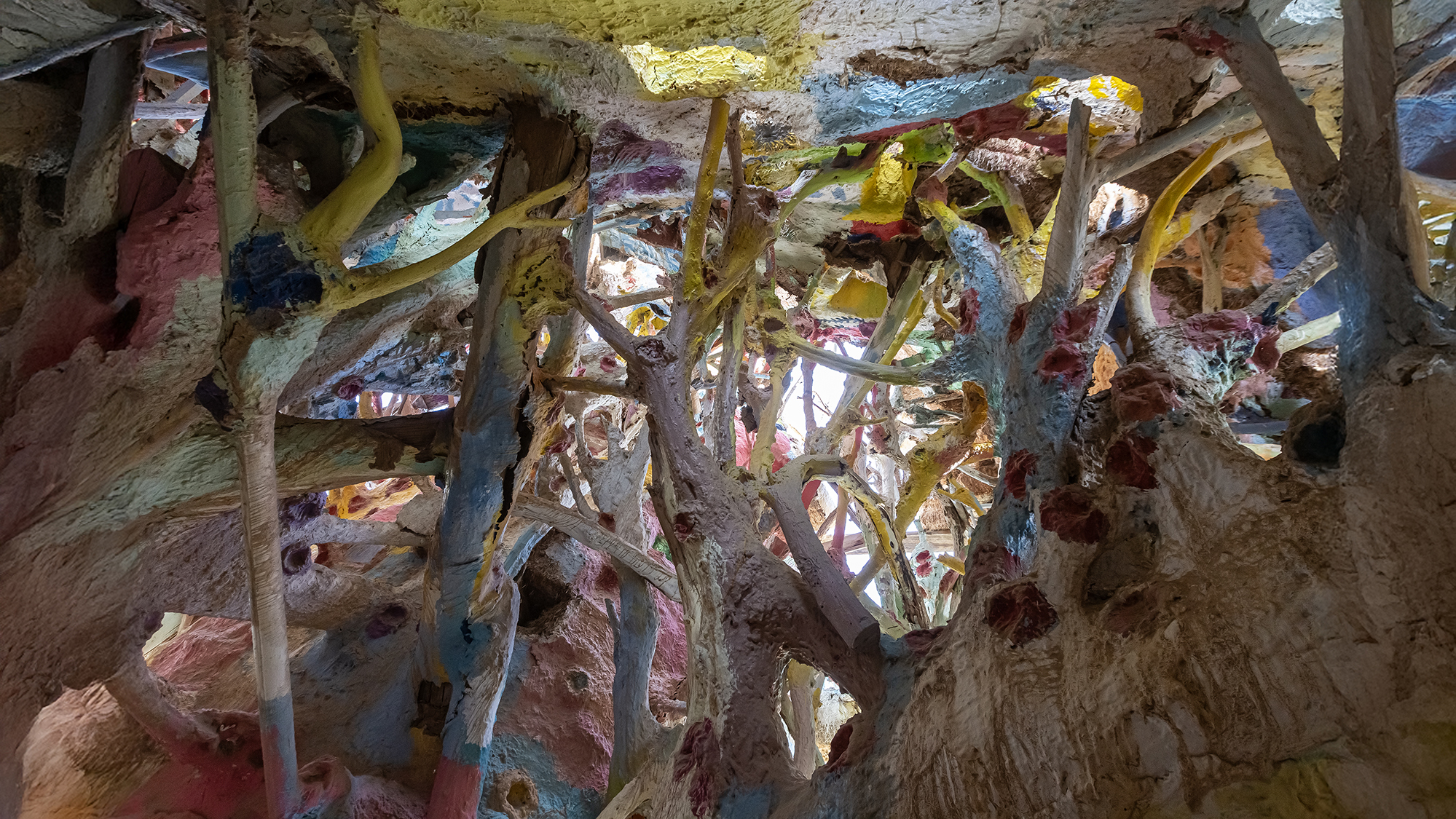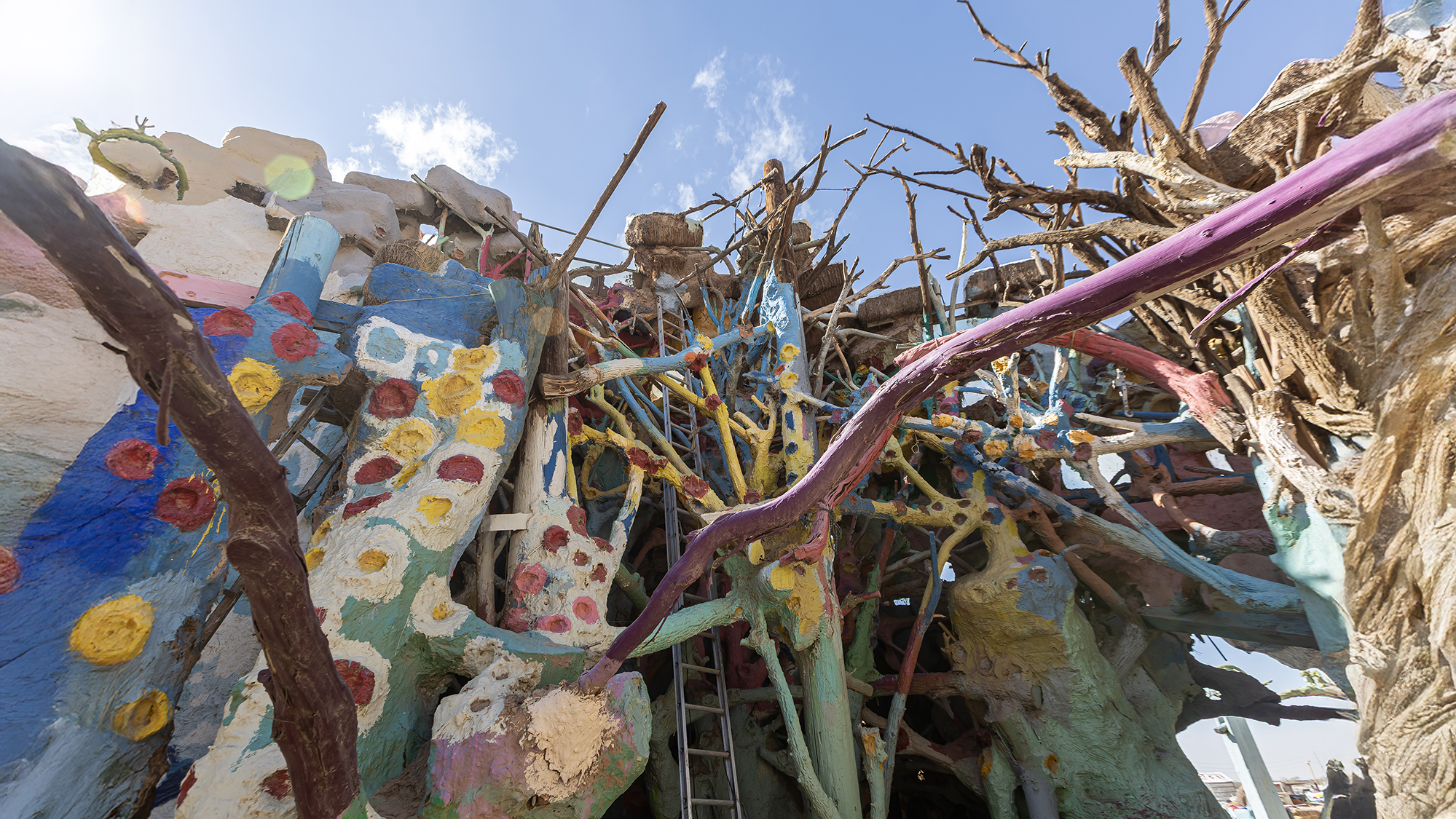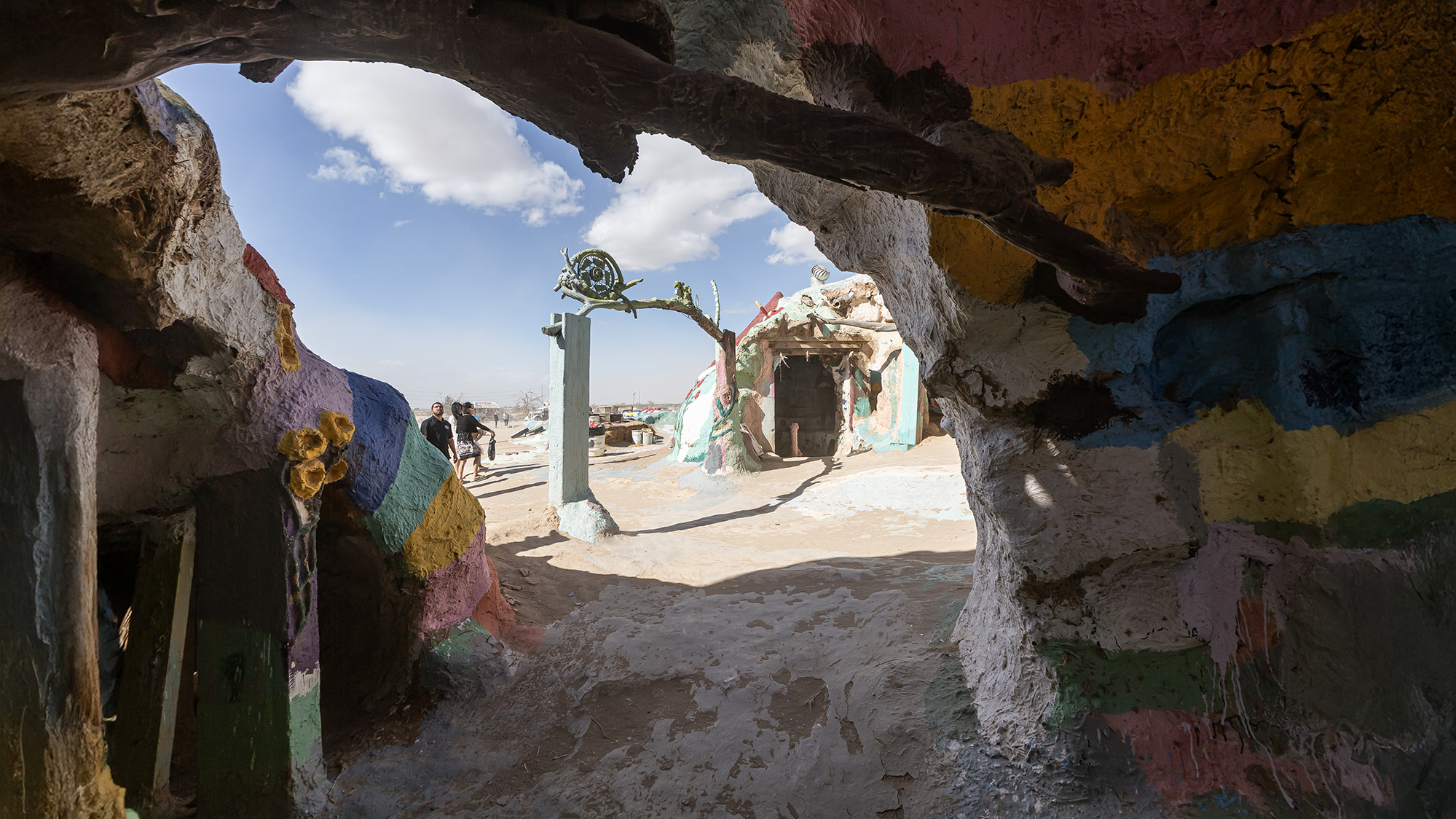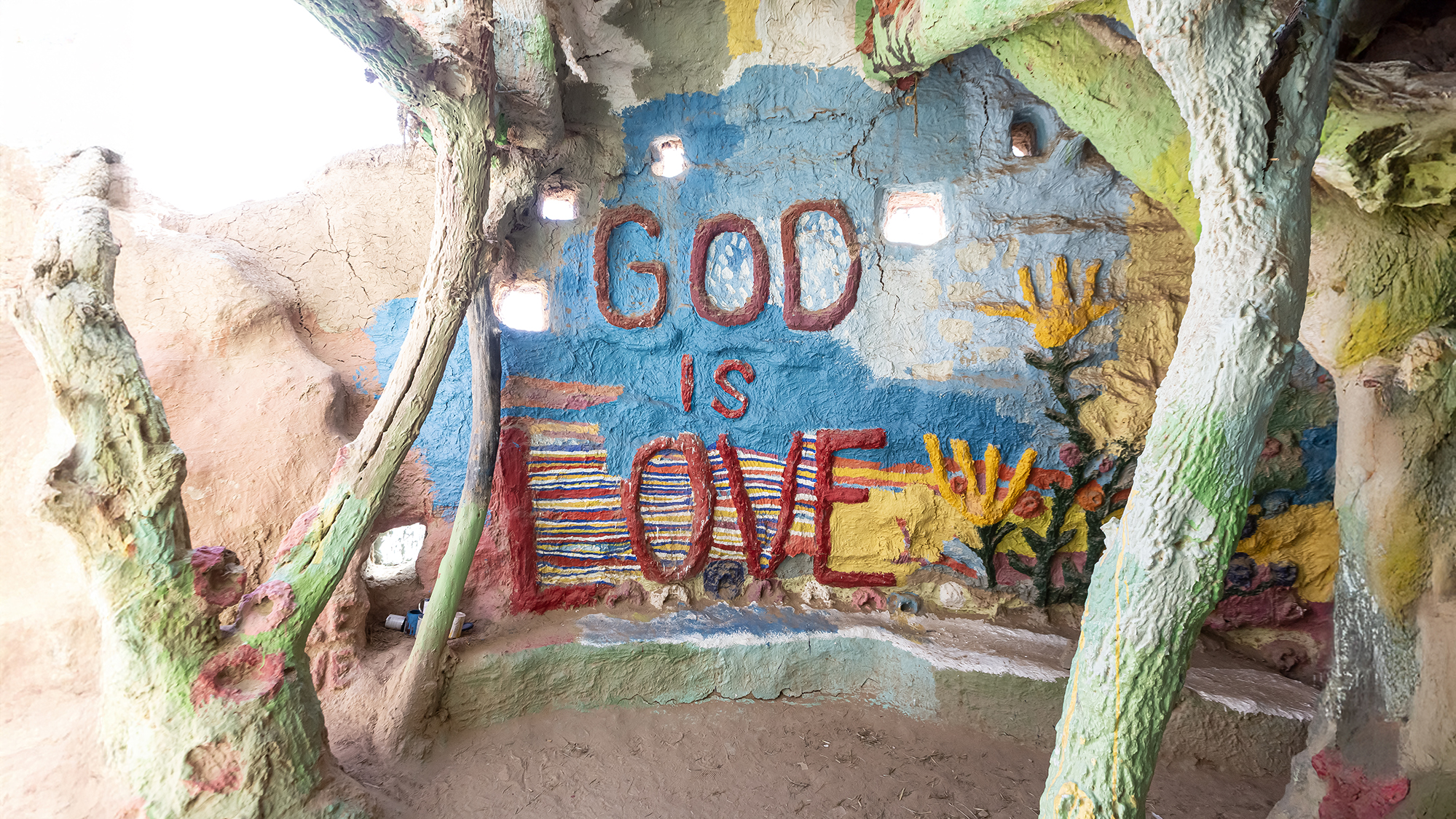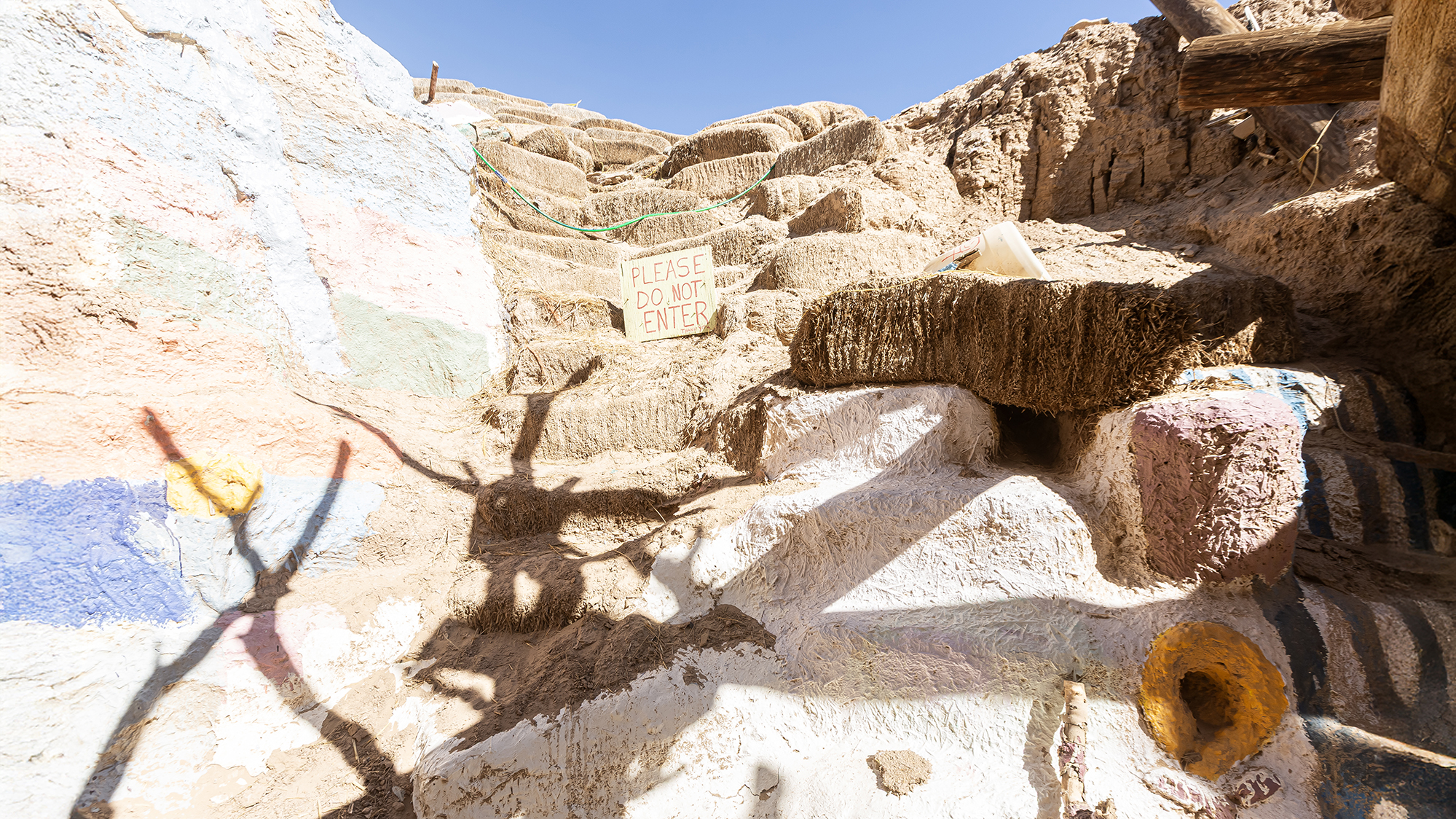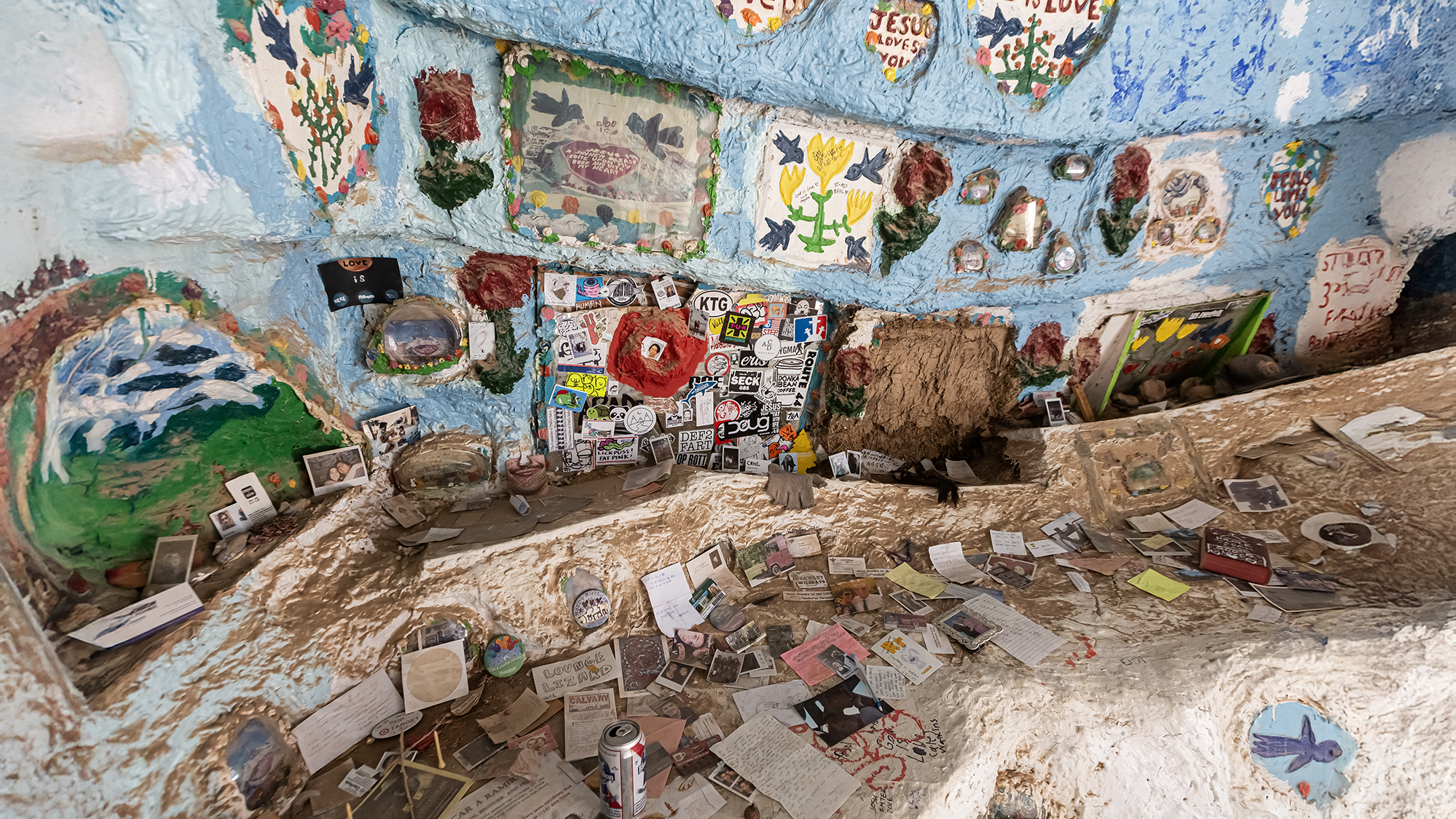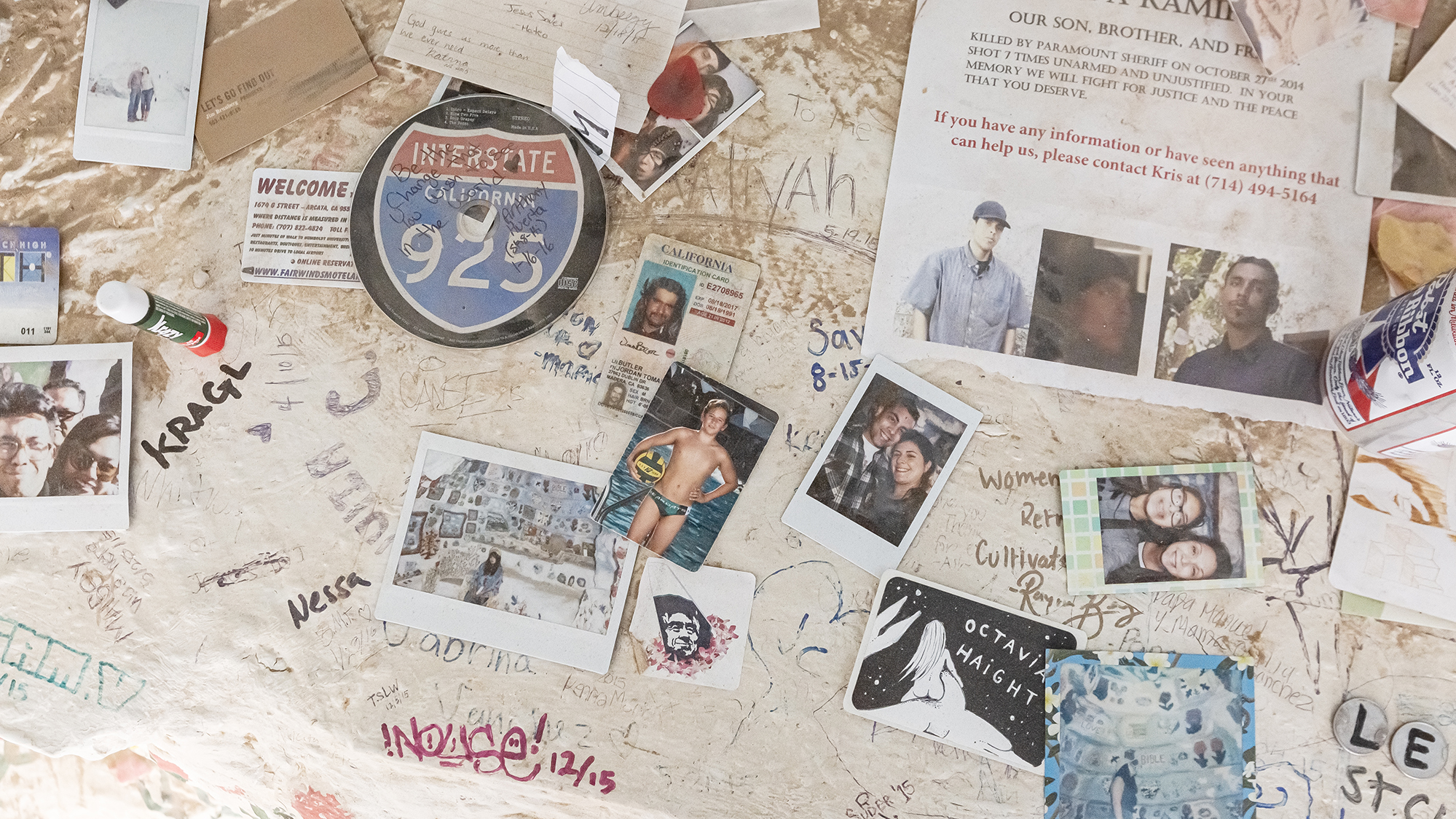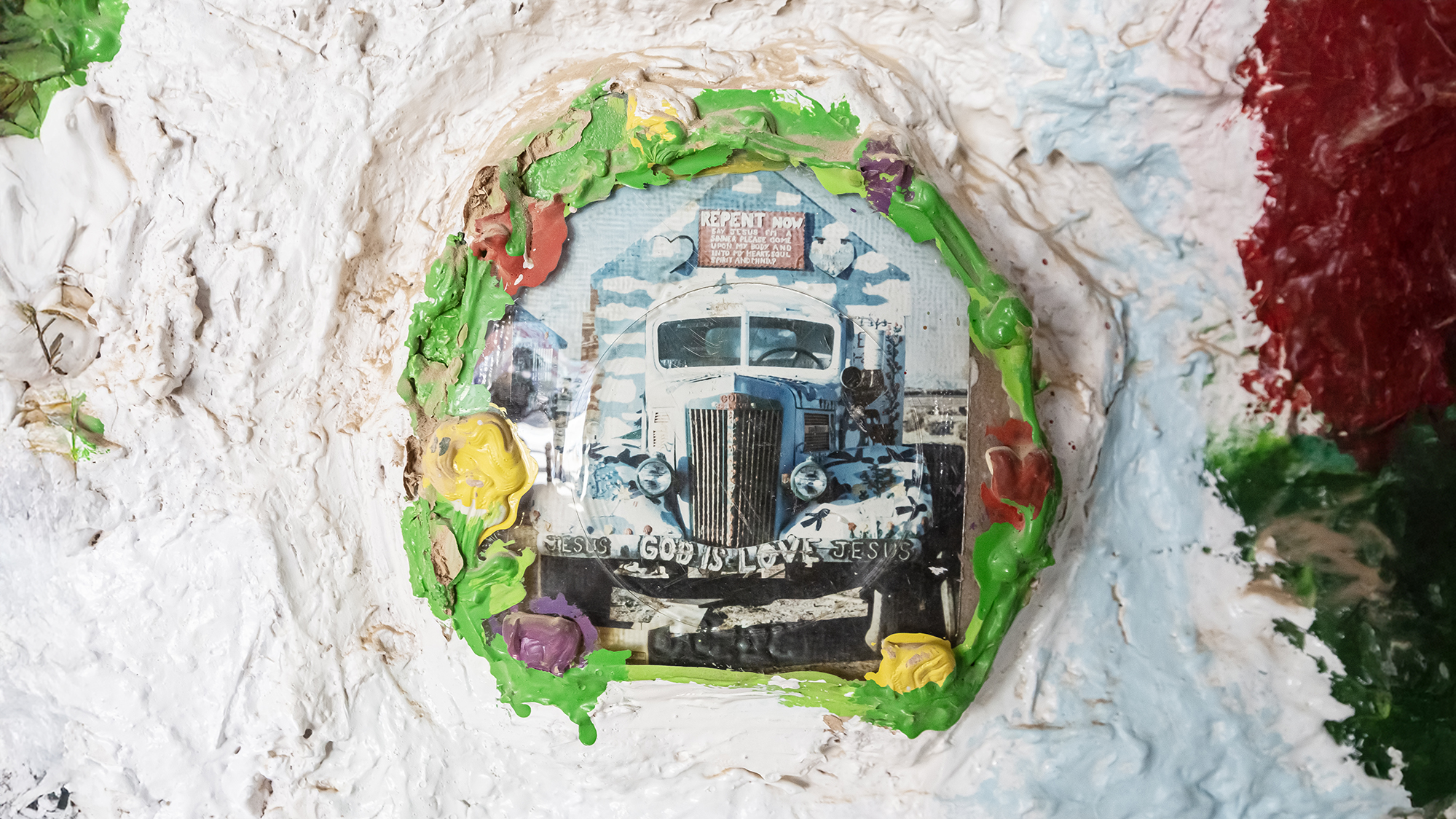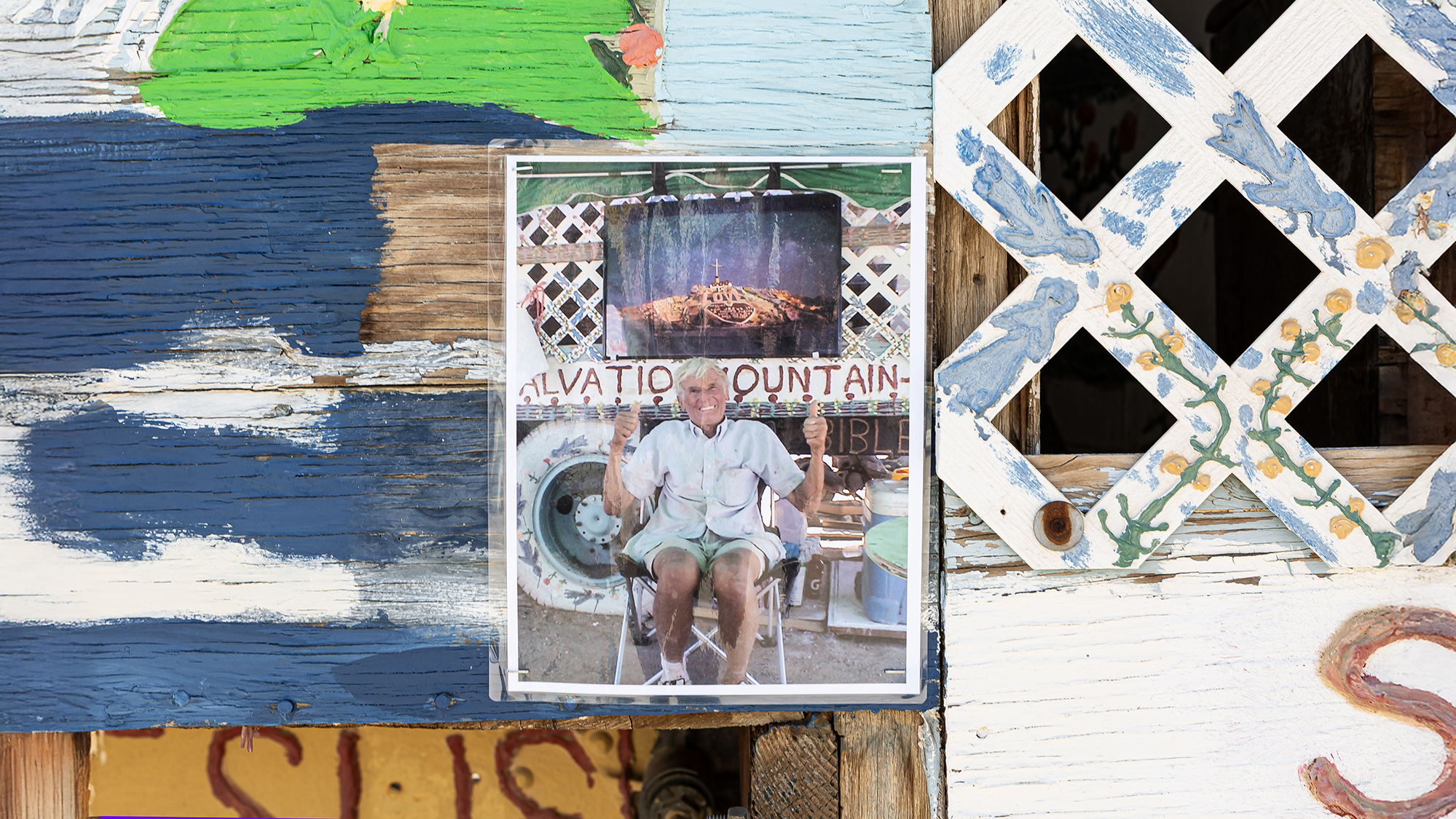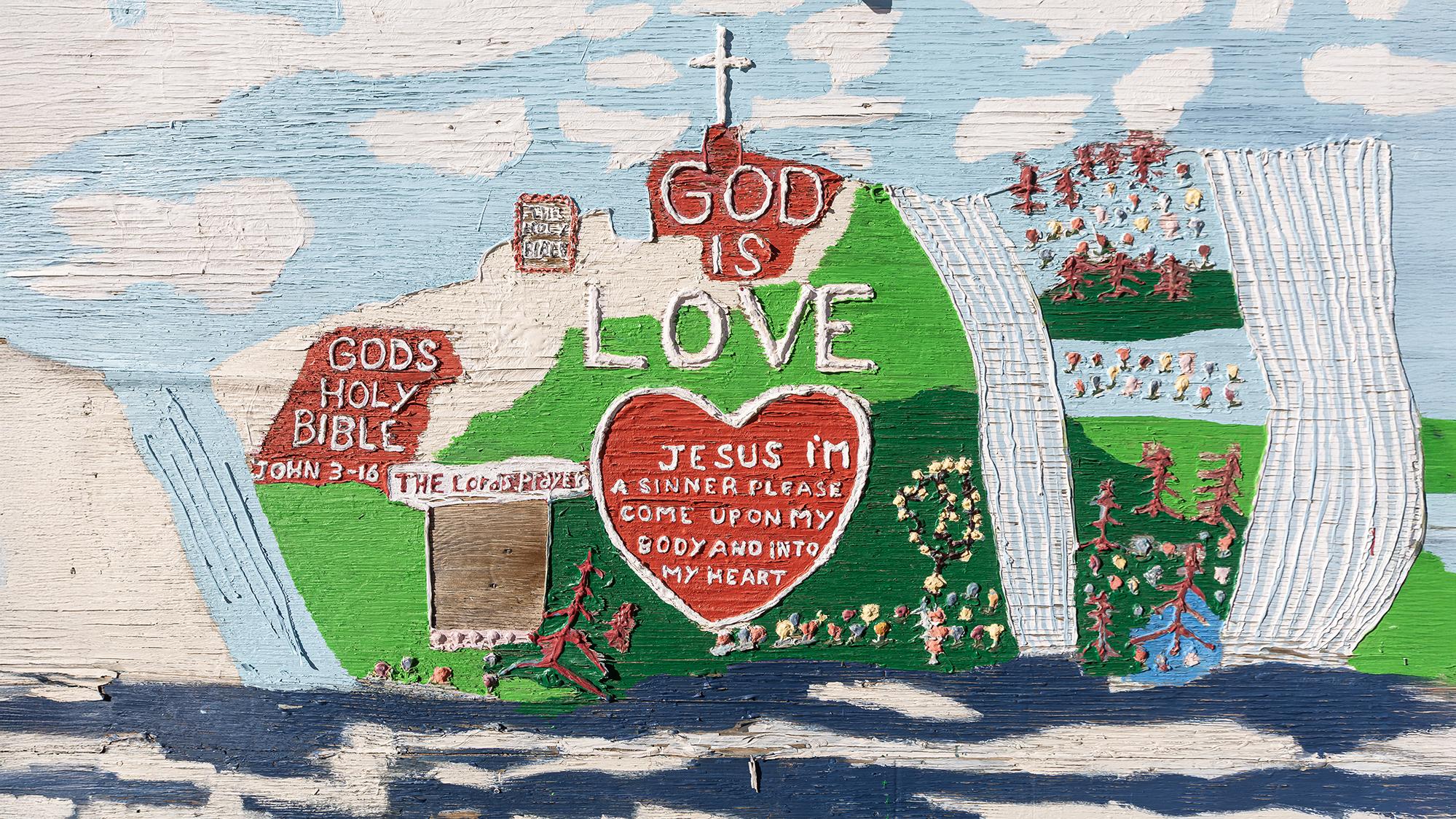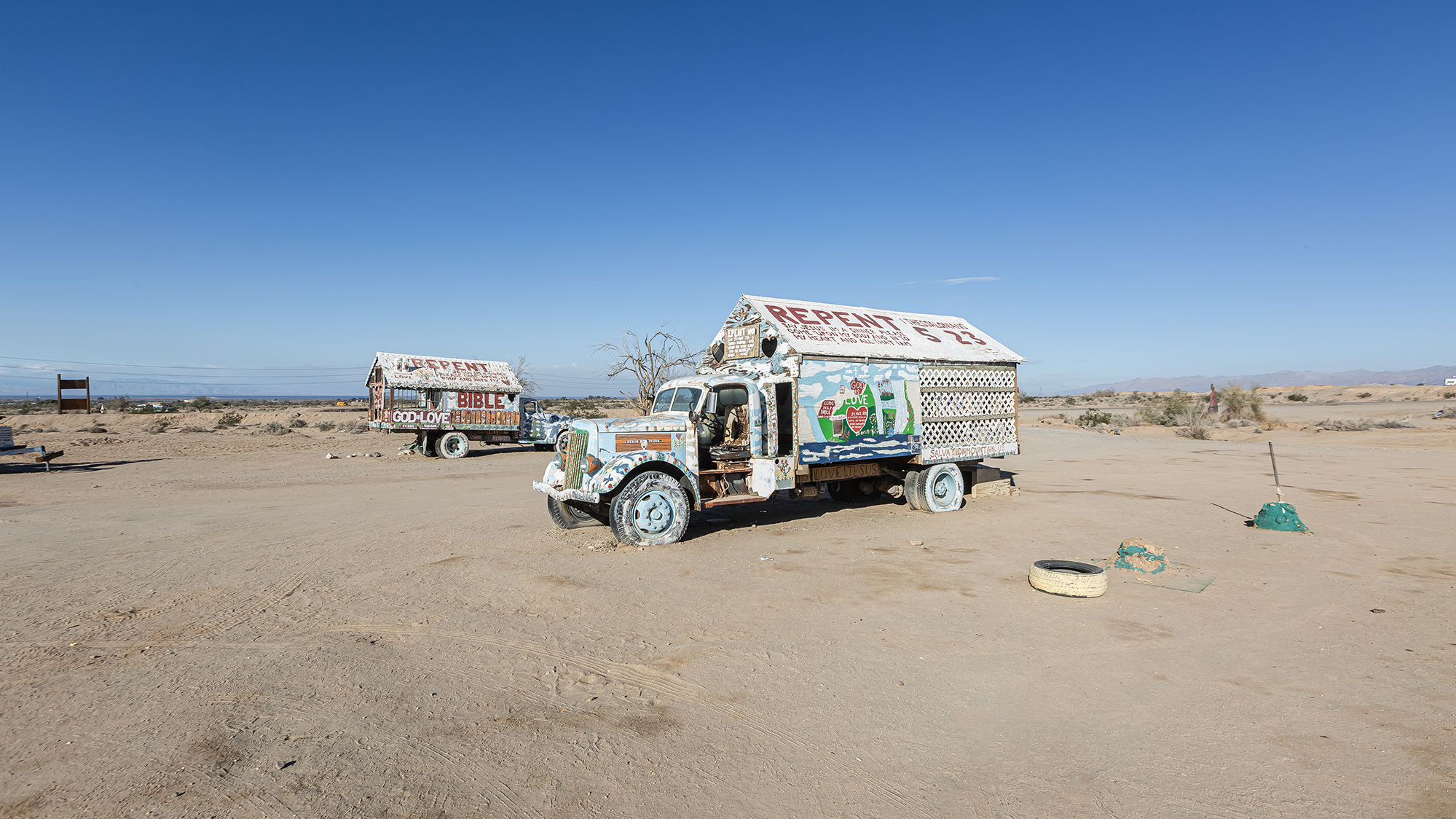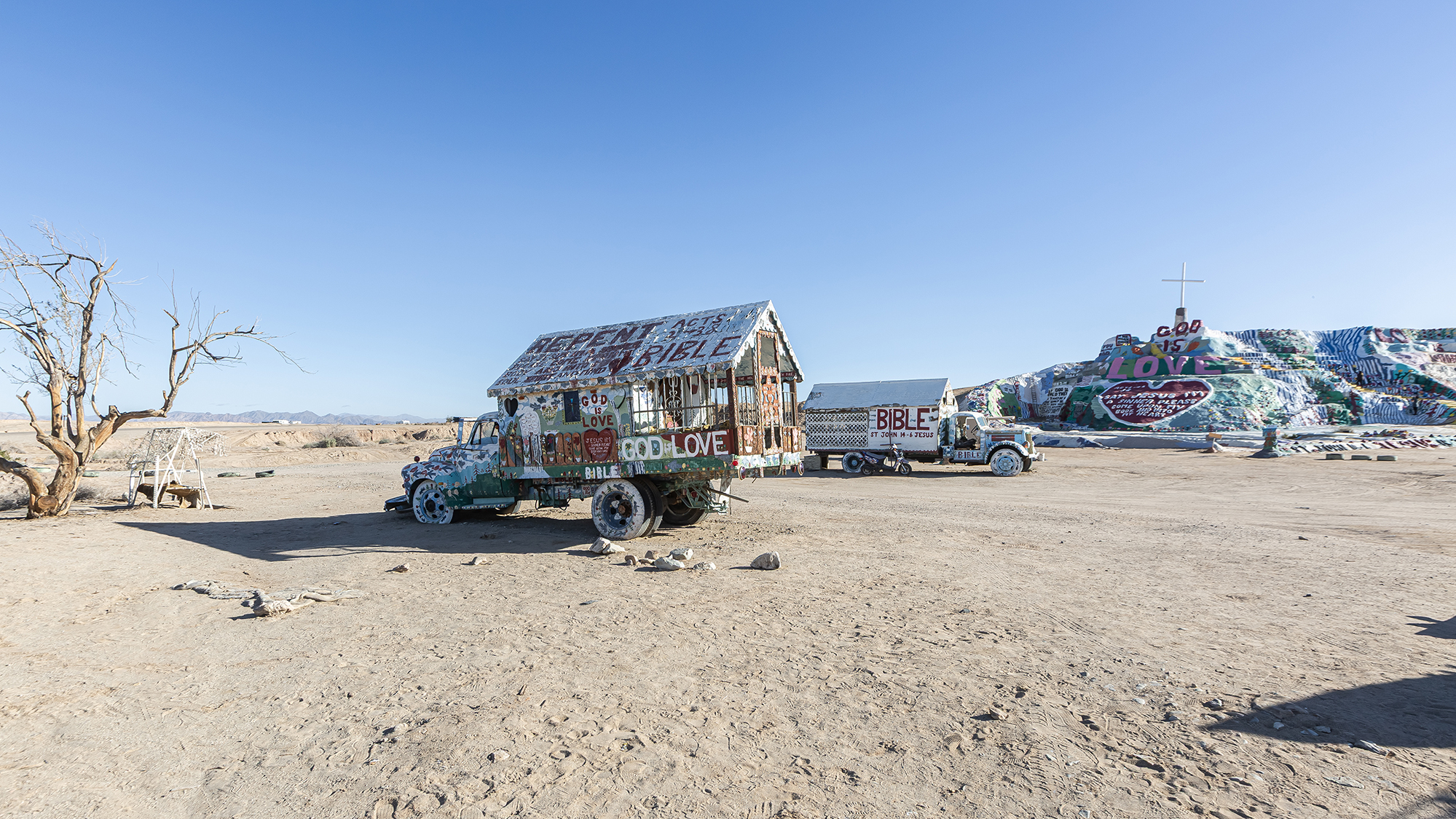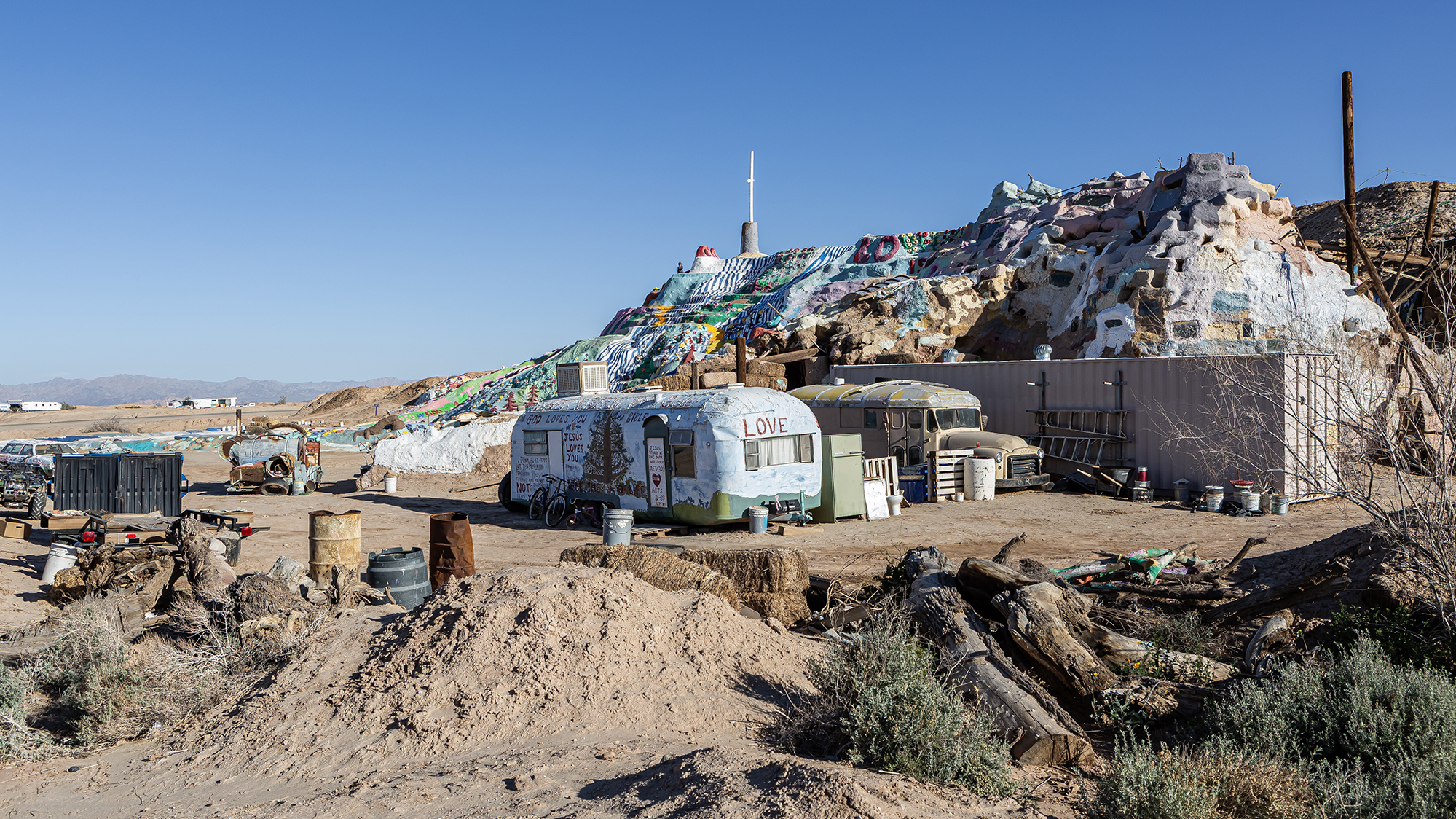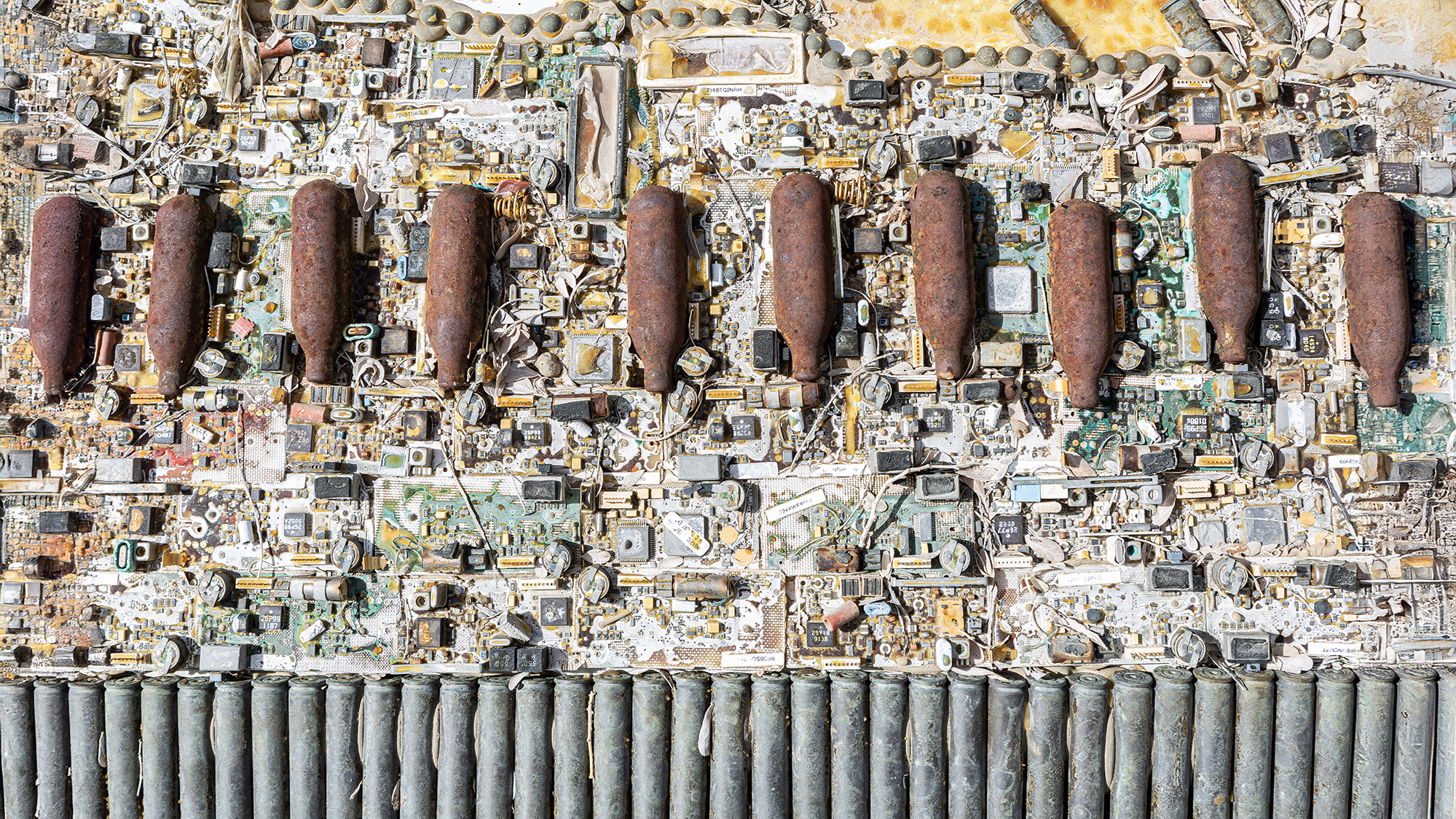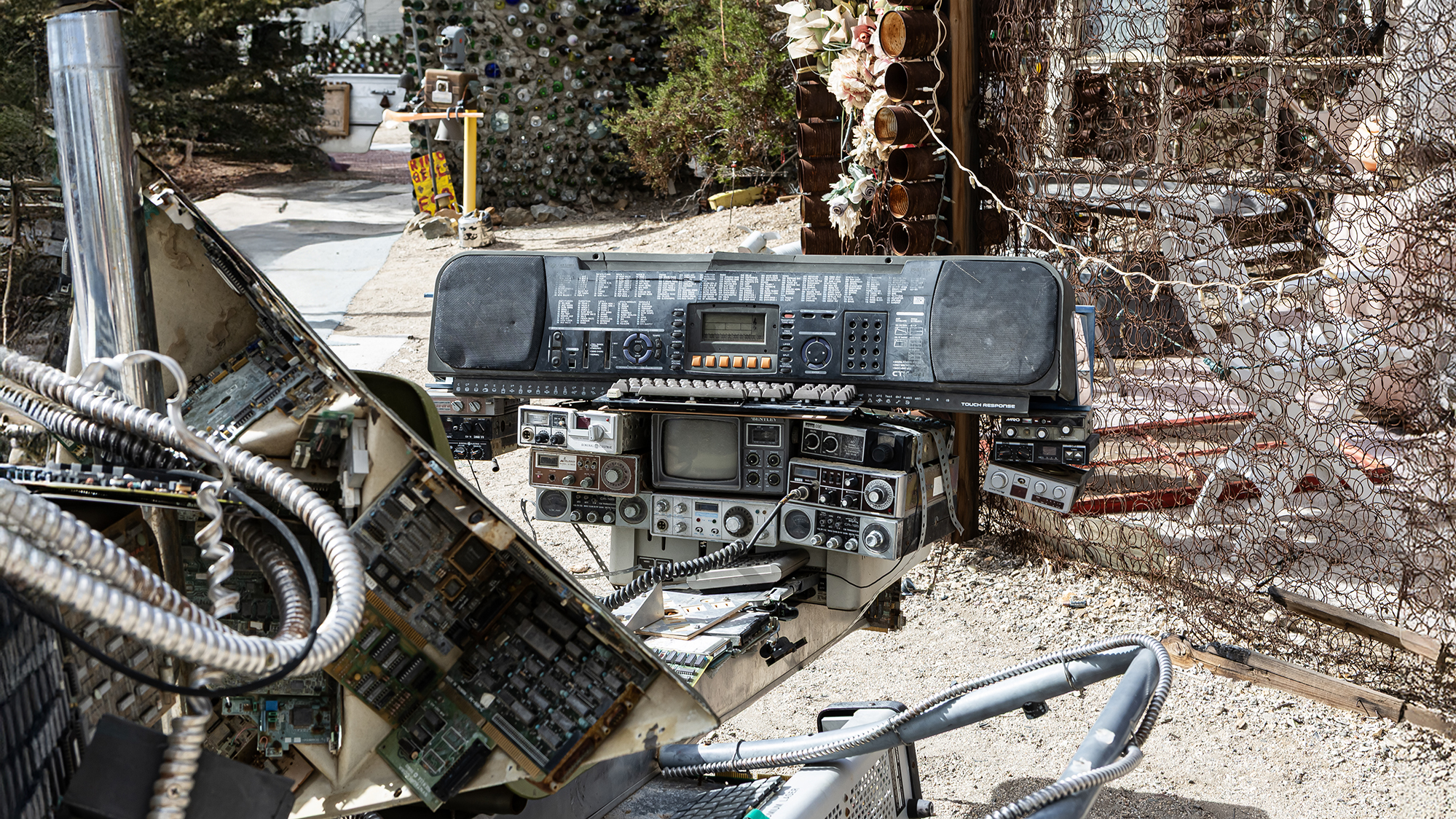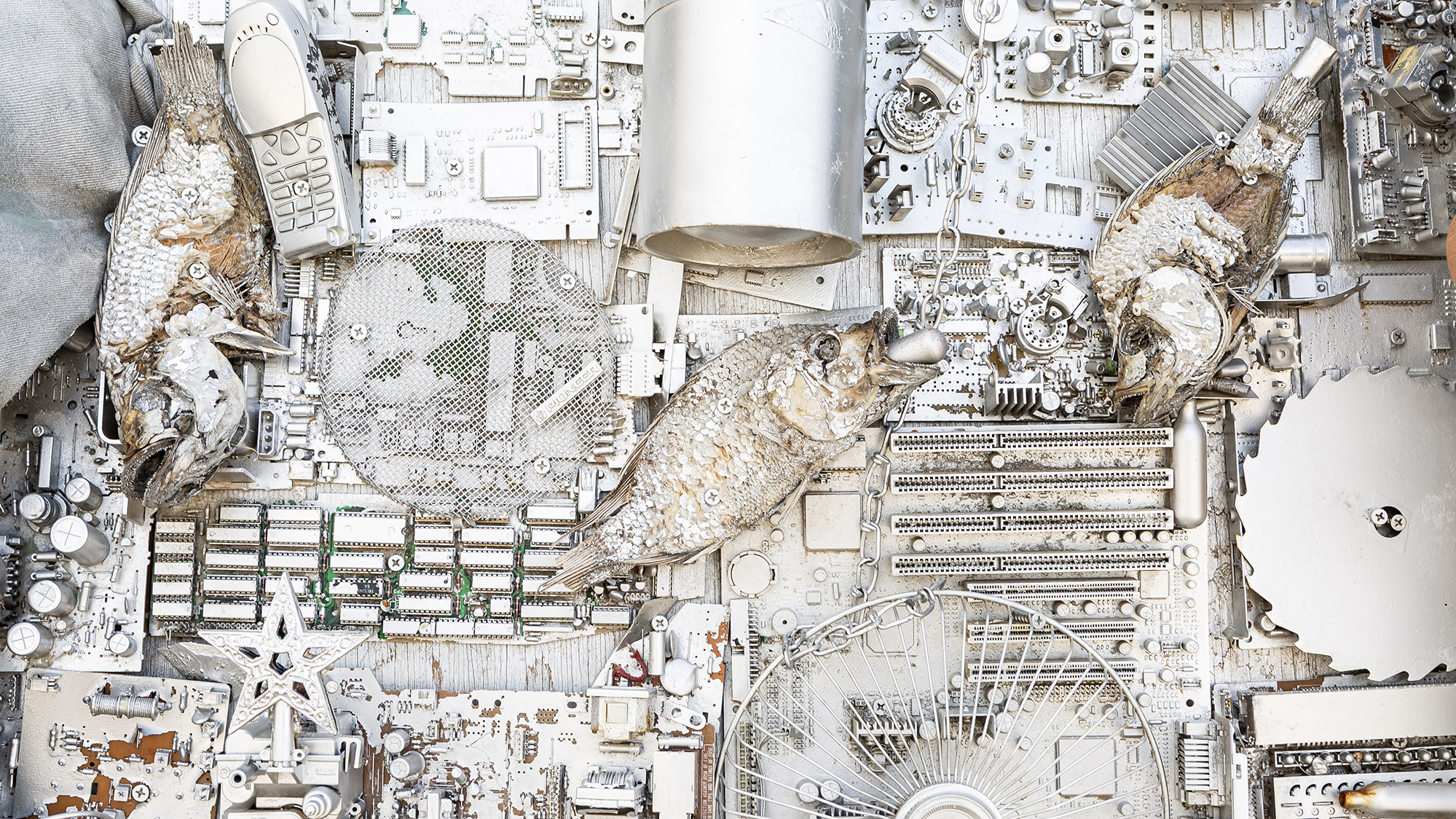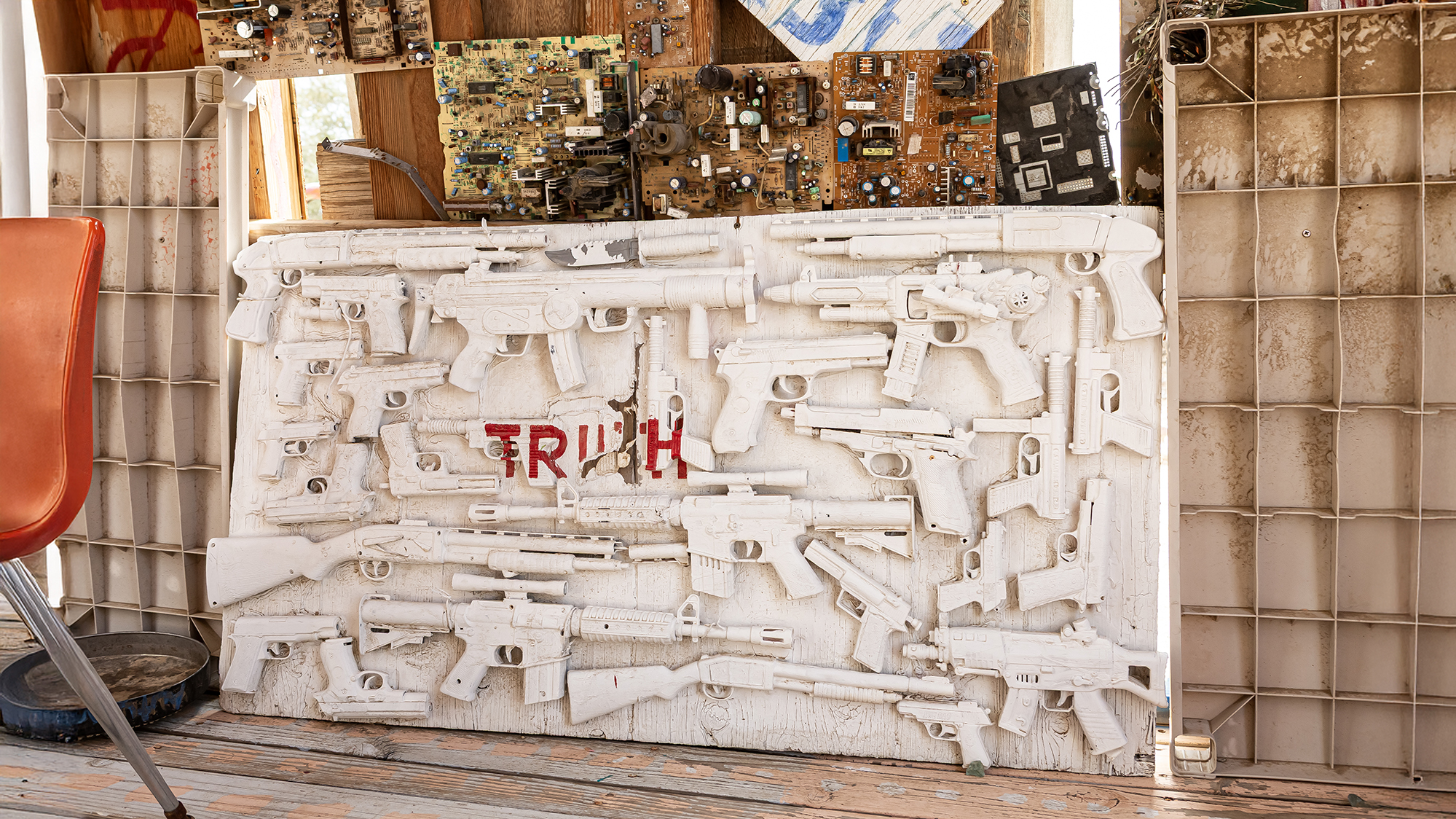Welcome to Slab City
A journey to Slab City – between scrap, fire, and desert skies. Encounters with outsiders, art in the dust: impressions from a place between utopia and dystopia.
Date
2016
Location
Slab City, California, USA
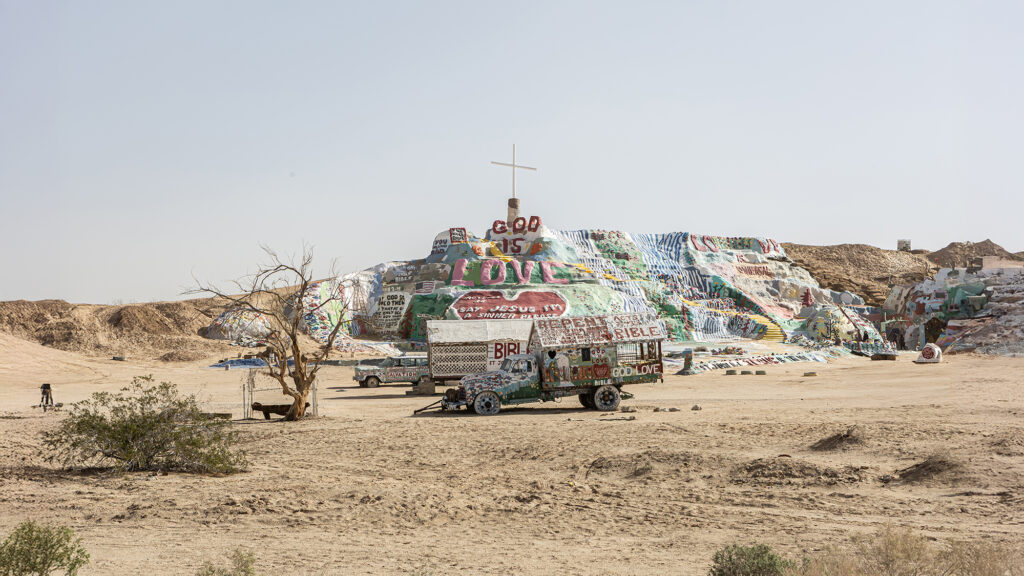
Slab City – The Last Free Place in America?
7,000 kilometers, two months, and six U.S. states. In early 2016, I traveled down the American West Coast – from north to south. We had read a lot about Slab City beforehand. A place beyond property, laws, and norms, supposedly free of rules, ownership, and constraints. The last free place in America – at least that was the myth. And it was precisely this myth that had made us curious. A place of freedom, of art, of conscious living beyond the system.
We reached the area in the late afternoon. The landscape was dry, dusty, deserted. Everything seemed frozen in time: broken infrastructure, rusty signs, empty streets. The sun hung low, the light was flat, as if the world had been put on pause. Niland felt like the last outpost of civilization before the unknown began. A dusty crossroads at the edge of the world.
Not much was left. A small store, an old soda machine baking in the sun, an empty parking lot. And a motel that looked like it hadn’t been booked in decades – except maybe for a B-movie.
The building was straight out of a desert road movie: peeling paint, neon letters half-lit, a vending machine rattling like rusty coins. The mattresses soft as wet cardboard, the AC louder than it cooled, something moving in the bathroom that refused to be identified.
We checked in. More out of necessity than conviction. Arrive. Catch a breath. Think about our next move. Rumors swirled: crime, drugs, violence. We decided to take it slow. Three pale kids from Germany, just trying to get the lay of the land.
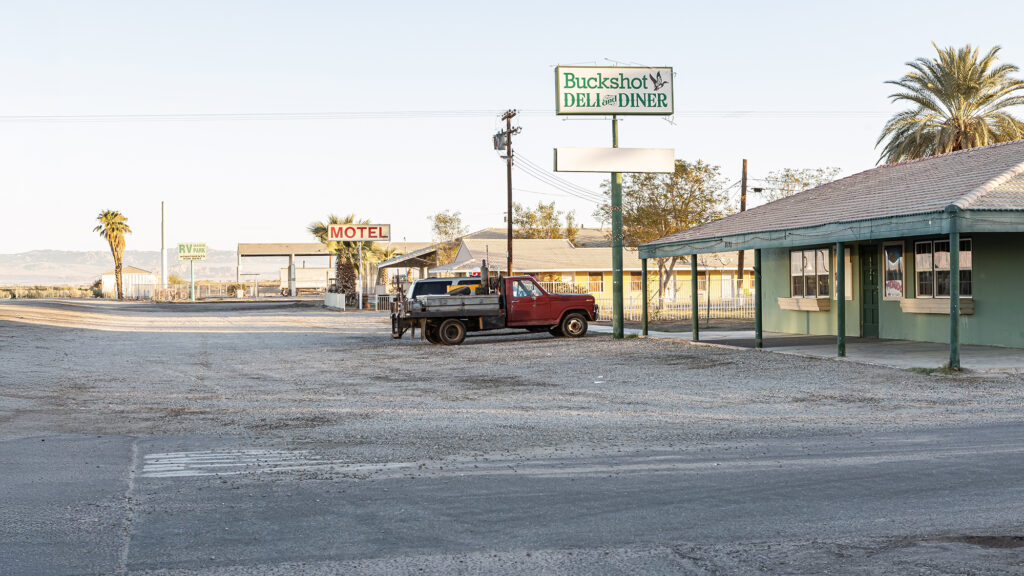
The area around Slab City is among the bleakest I’ve ever seen. The nearby Salton Sea, once a tourist magnet with beaches, marinas, and holiday homes, is now a dying, ecologically collapsed salt lake. Fish long dead, the water reeking of sulfur, the shore made of powdered fish bones. In Bombay Beach, once a glamorous getaway, rusting trailers and half-collapsed houses stood like exhibits in a museum of decay. A place that had given up on itself.
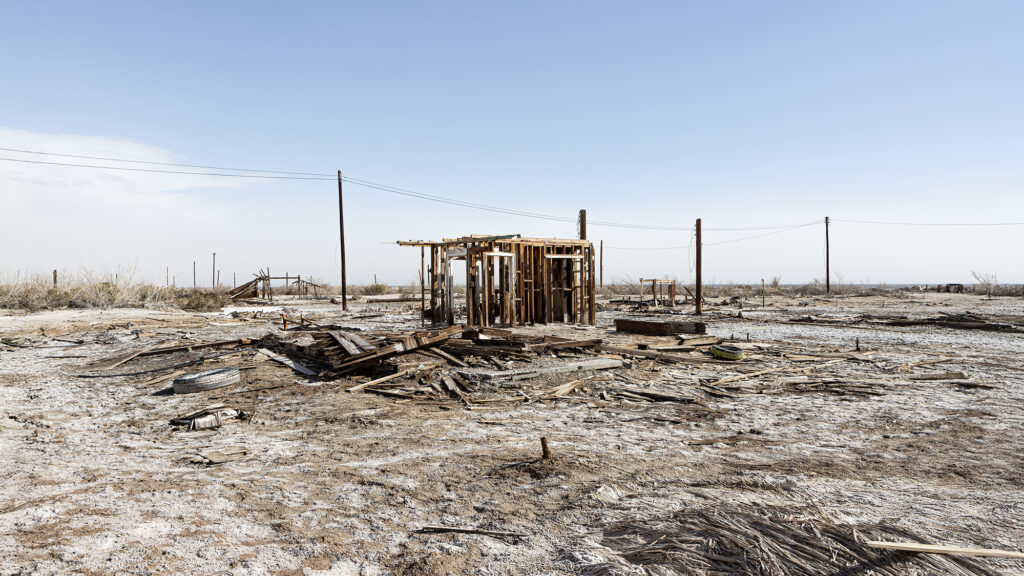
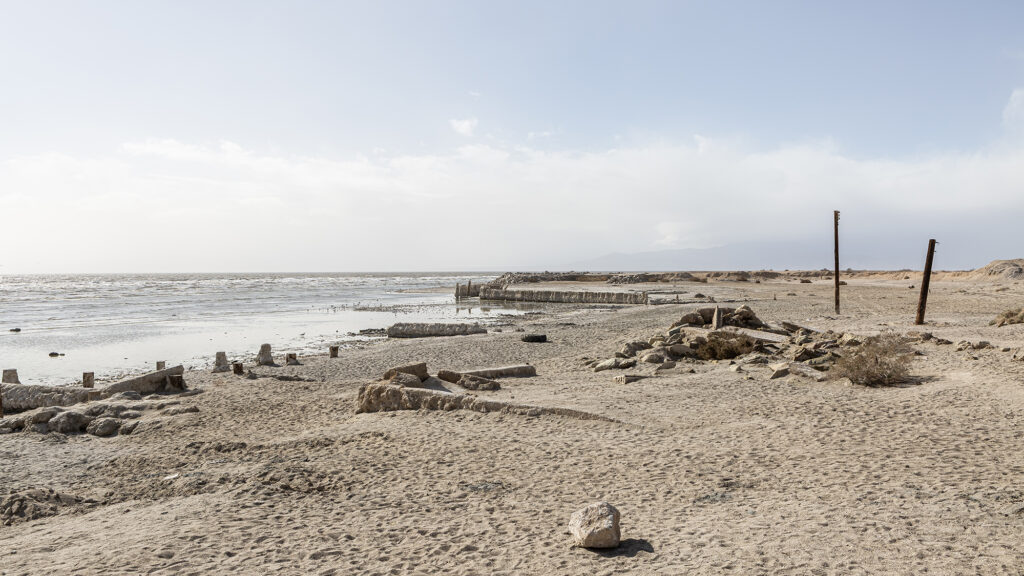
The next morning I set out alone. I wanted to see the sunrise, to escape the stale stench of the motel room. The others were still asleep. I walked through Niland on foot. Even in daylight, everything felt gray and abandoned. Empty buildings, boarded-up windows, overgrown yards. A town that once tried to live and was then forgotten. It was quiet, eerily quiet. Not a good place to stay. But the right one to set out for Slab City.
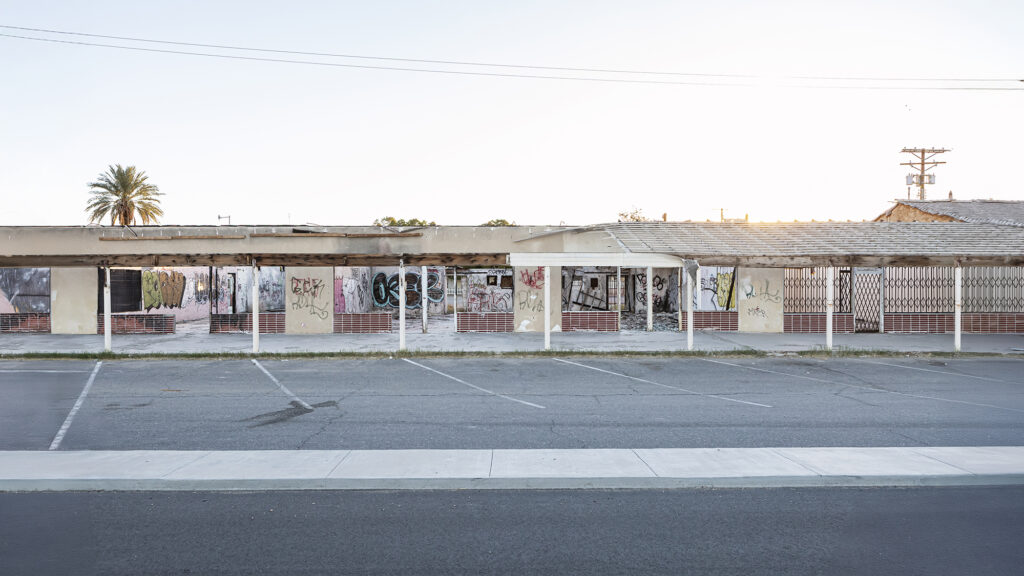
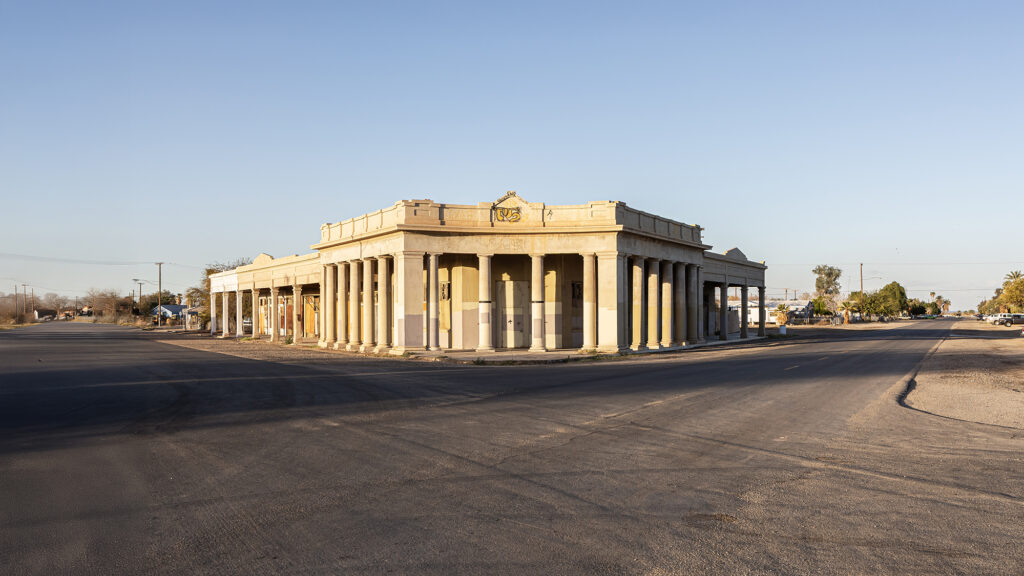
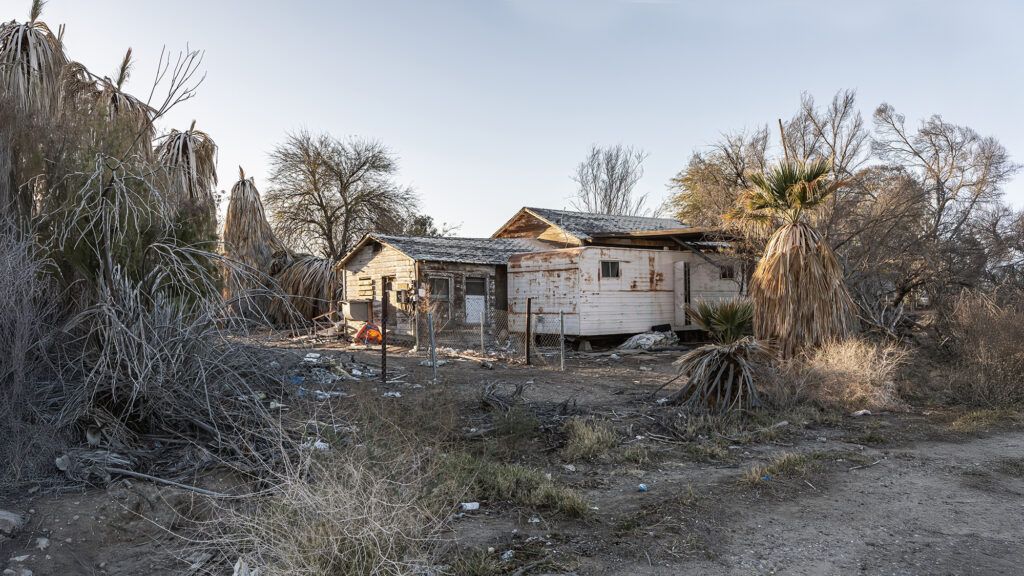
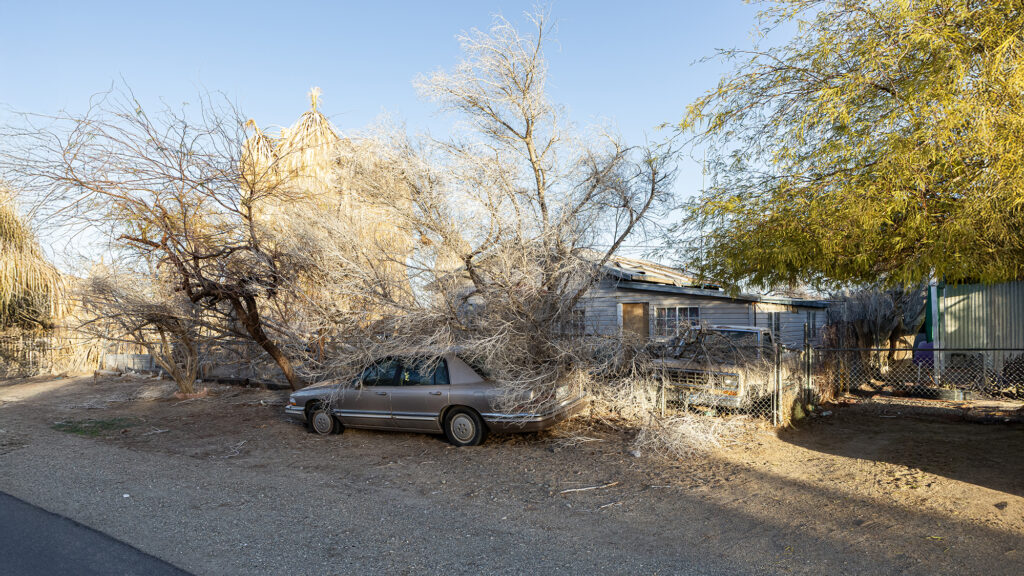
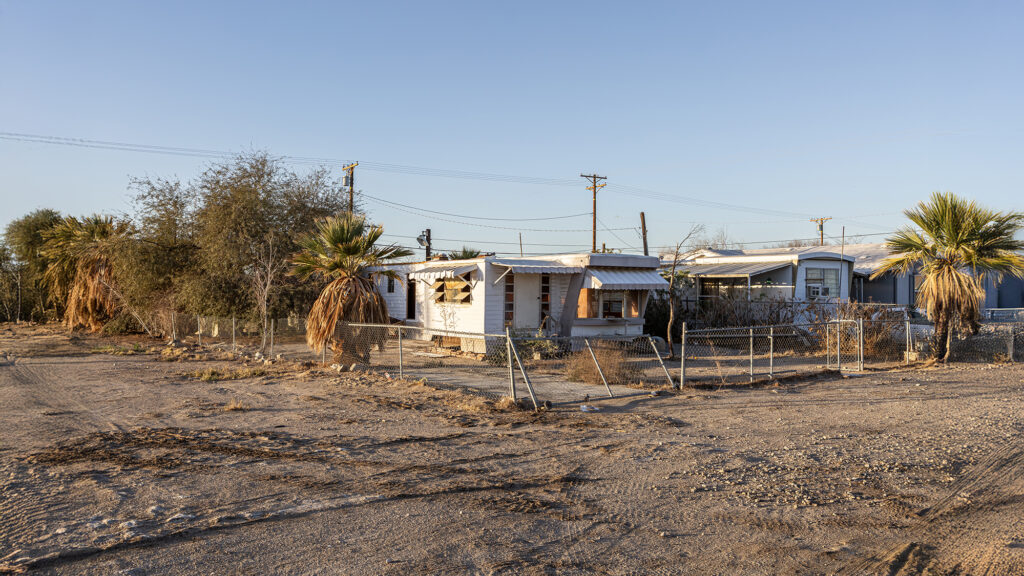
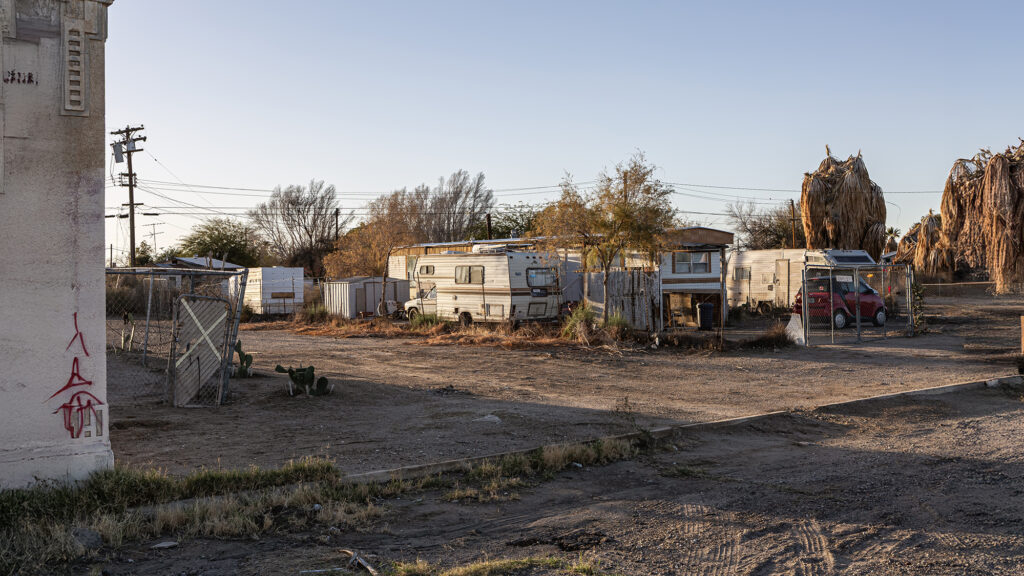
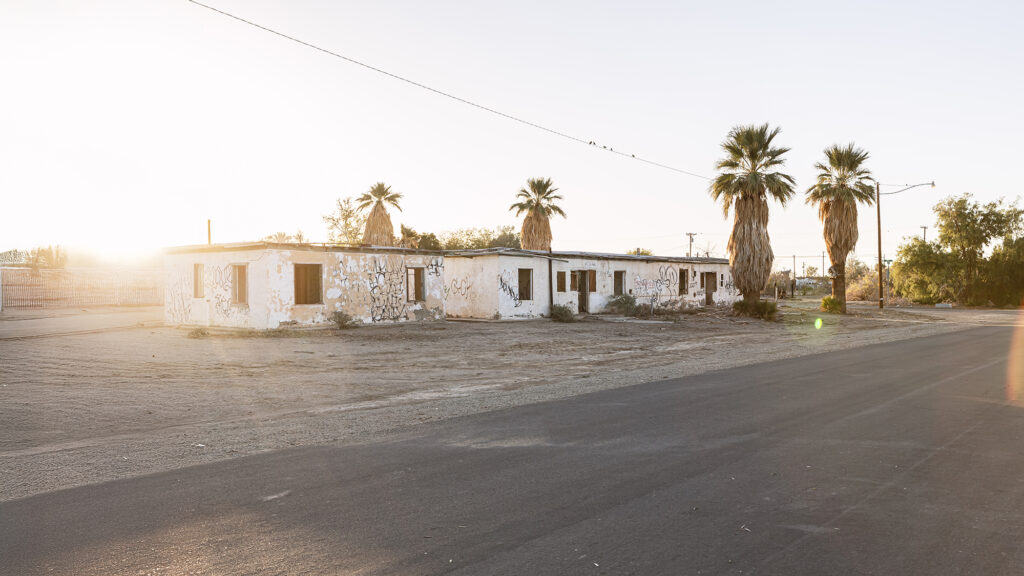
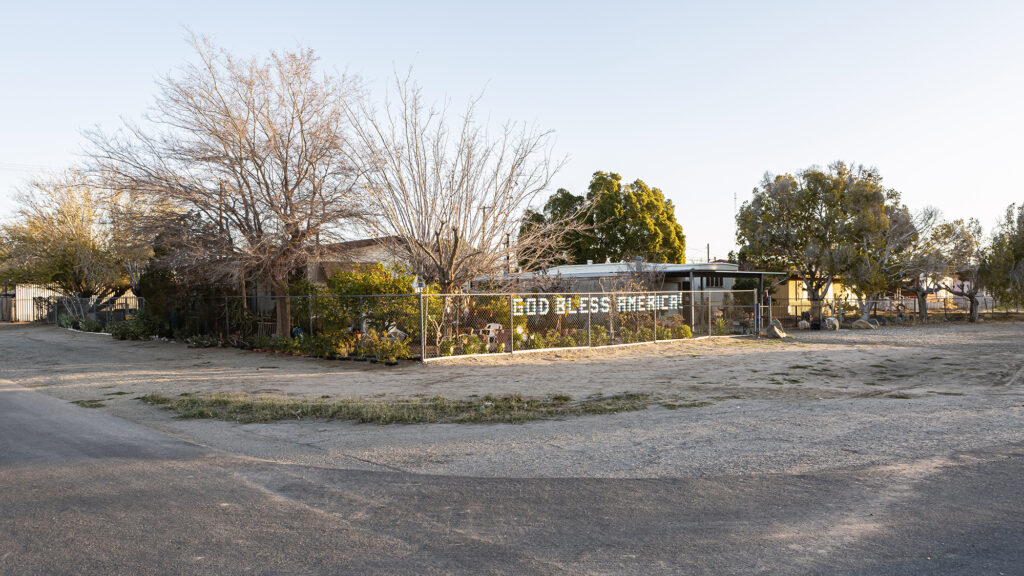
Soon the first signs appeared: abandoned structures, old silos, painted containers, campers in the distance. Snowbirds, as they’re called. And suddenly, the feeling I had been chasing the whole trip was there: curiosity. Expectation. A sense of something different.
Slab City sits on the site of the former U.S. Marine base Camp Dunlap. Its name comes from the leftover concrete foundations – the “slabs” – on which improvised shelters, trailers, buses, and scrap shacks now stand. There is no rent, no power grid, no water, no garbage collection. Some come in winter to escape the snow – the so-called Snowbirds. Others stay year-round. By choice, or because they can’t leave. Some out of conviction, others out of necessity. Between these groups, invisible trenches often run deep.
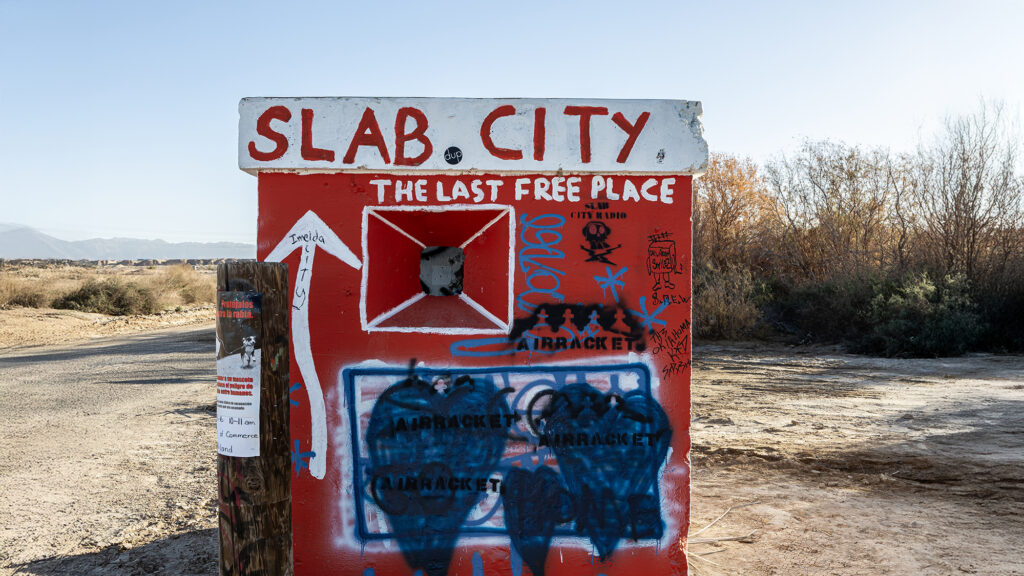
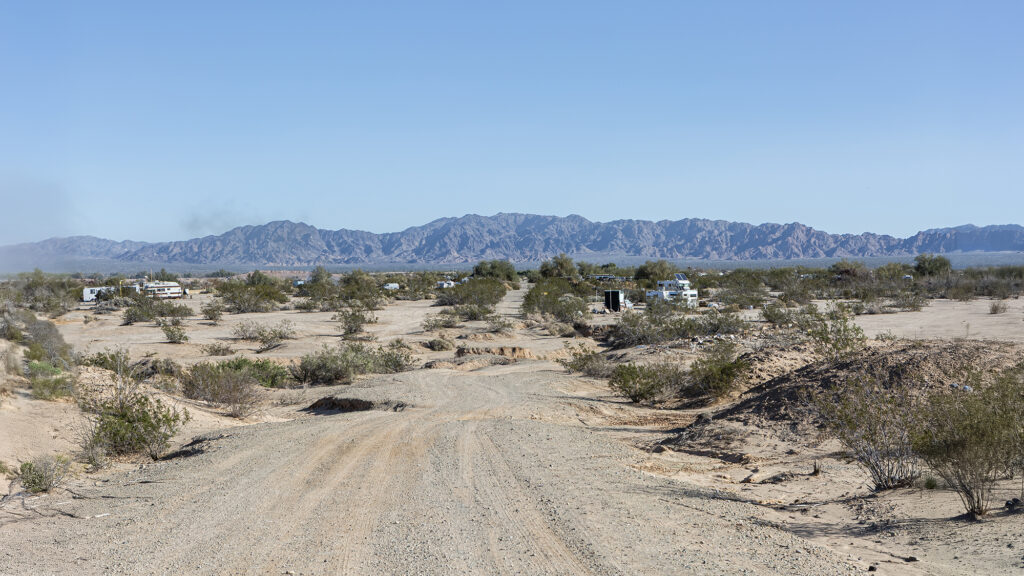
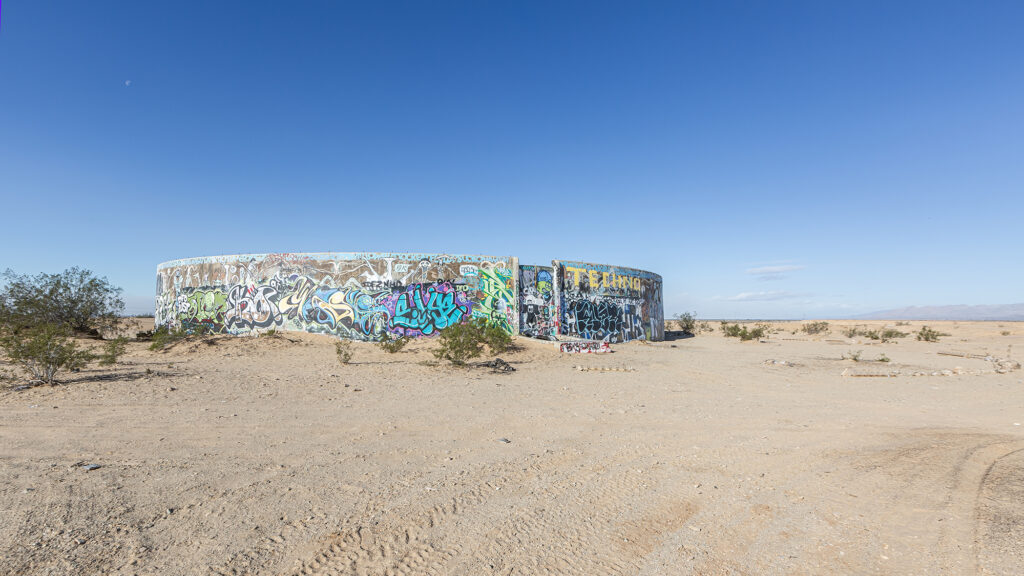
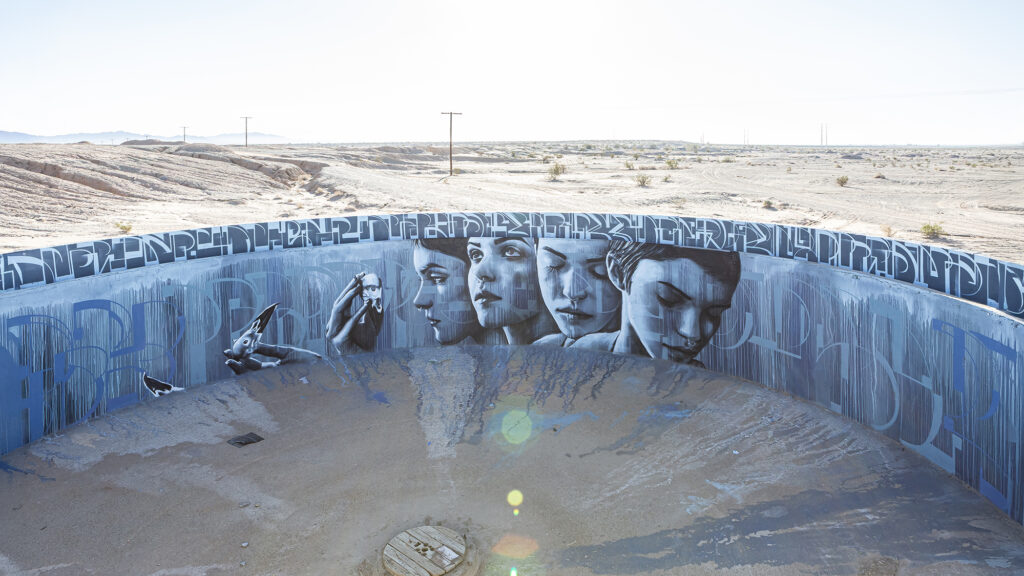
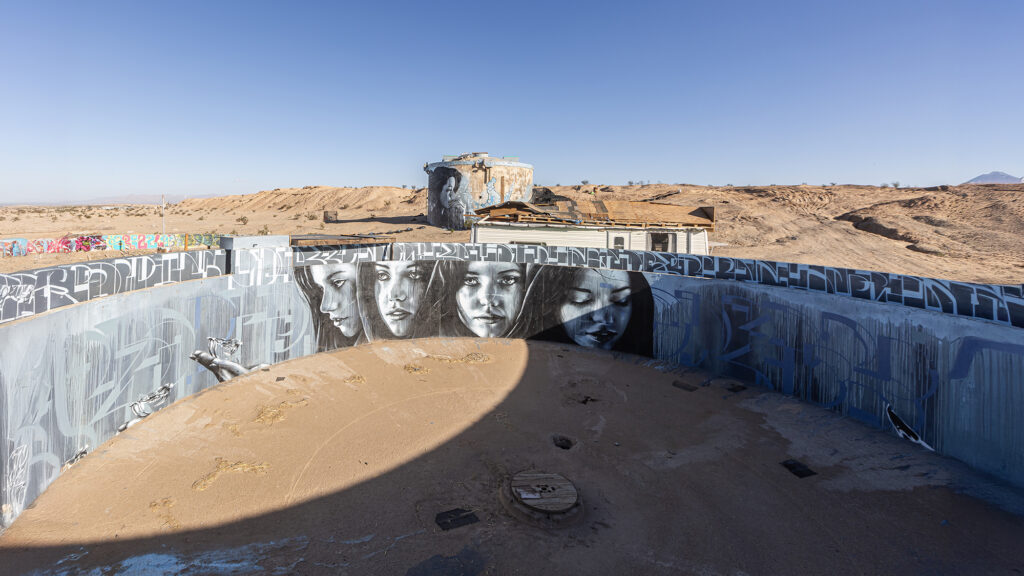
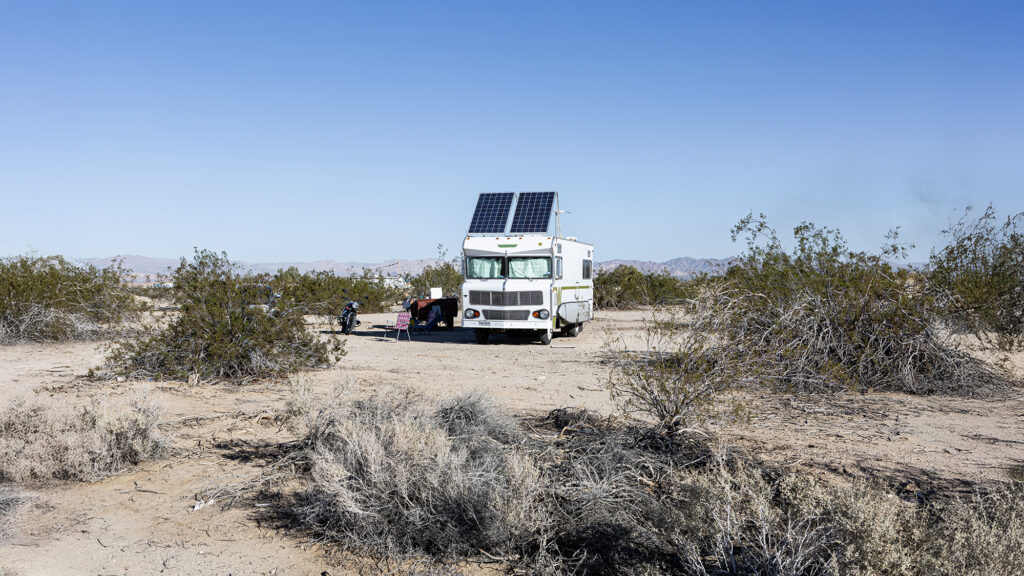
At the entrance stands Salvation Mountain – a clay hill doused in paint and reinforced with straw bales, built by artist Leonard Knight. It is part artwork, part sermon, part monument. Biblical messages in bright colors, embedded in the dusty desert. It was the first moment on this trip that matched the image I had carried in my head: colorful, free, crazy. A place where something was happening. Or at least once had. Because the man who built it, Leonard Knight, was already dead by then. Knight had settled here in the 1980s, originally wanting to build a hot-air balloon as his message to the world. When that failed, he began constructing this mountain from clay, paint, and scrap – over decades, like an endless ritual. To some he was a hermit, to others a prophet, to others still just a strange old man. Until his death in 2014, he lived in a truck beside the mountain, working on his vision every day. Salvation Mountain remains, a monument inseparable from his story.
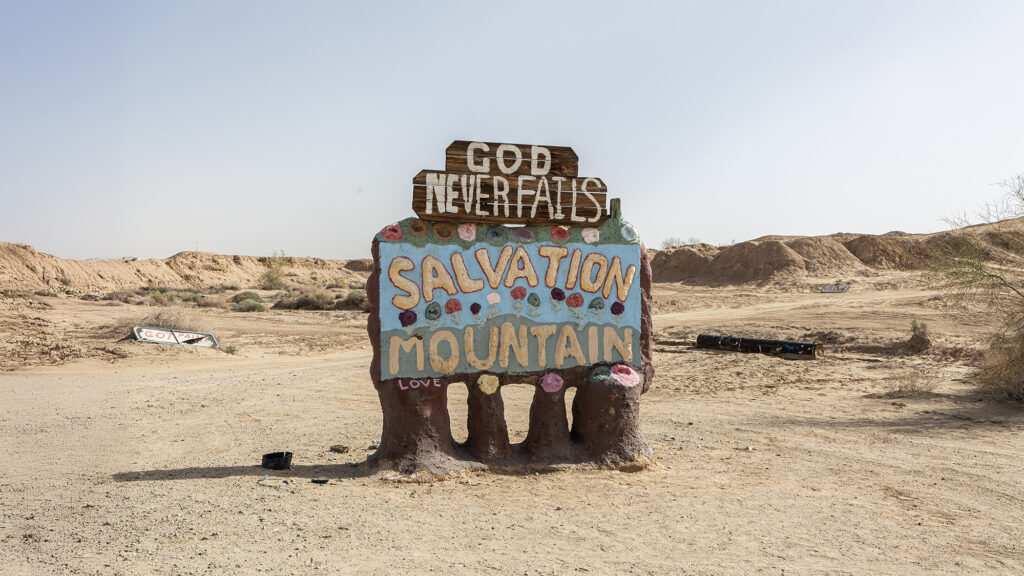
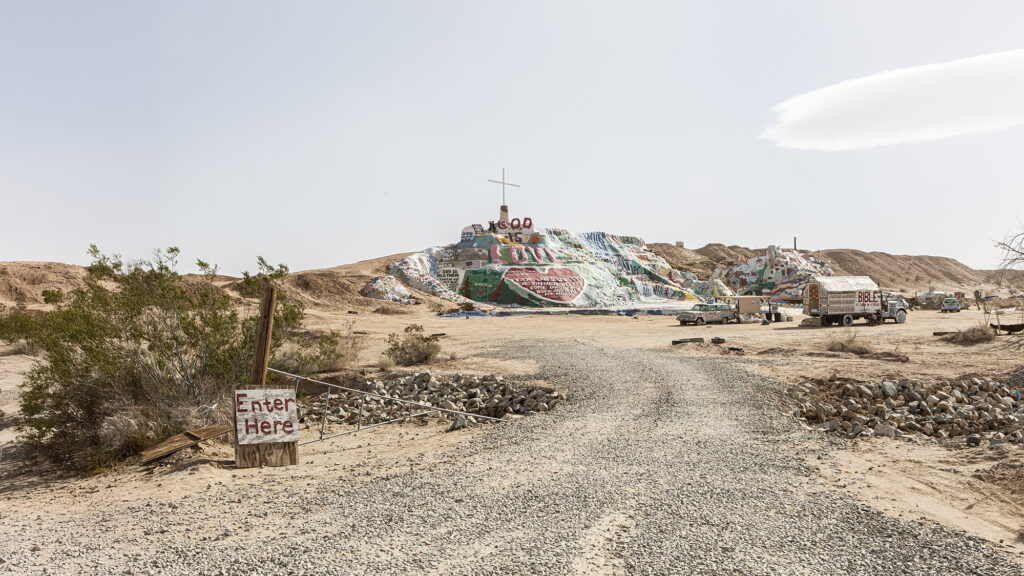
But the longer you stay, the more that burst of color dissolves. Beyond Salvation Mountain begins something else. The first dumps appear, abandoned cars, burnt-out campers. Everywhere fragments – remnants of lives once lived and long since abandoned. A landscape of withdrawals, of leftovers.
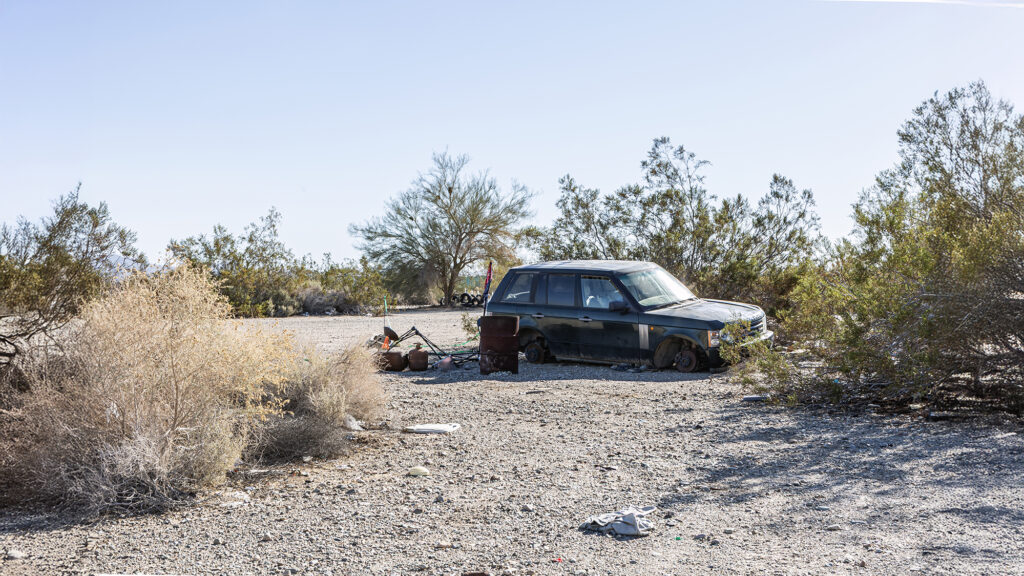
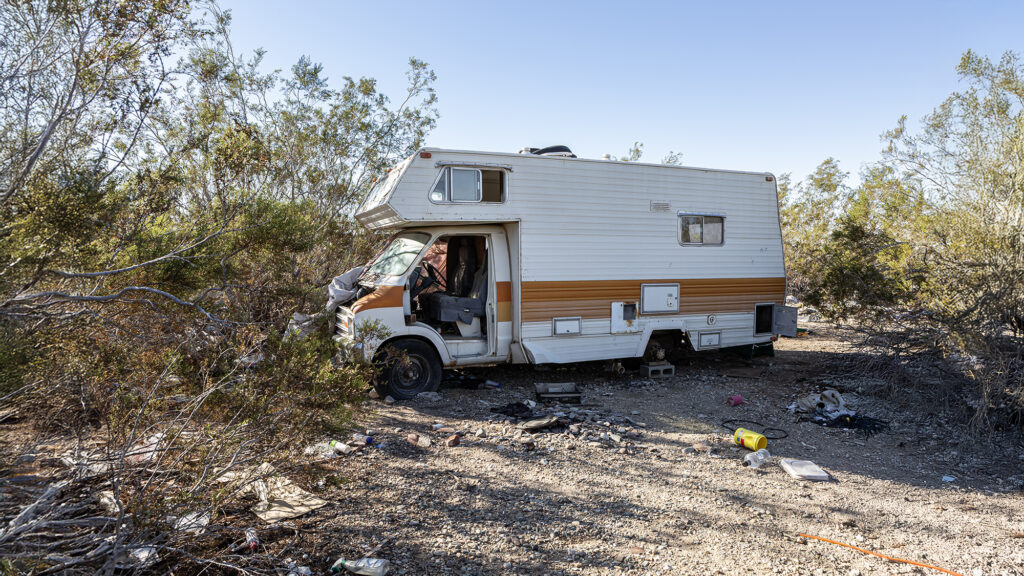

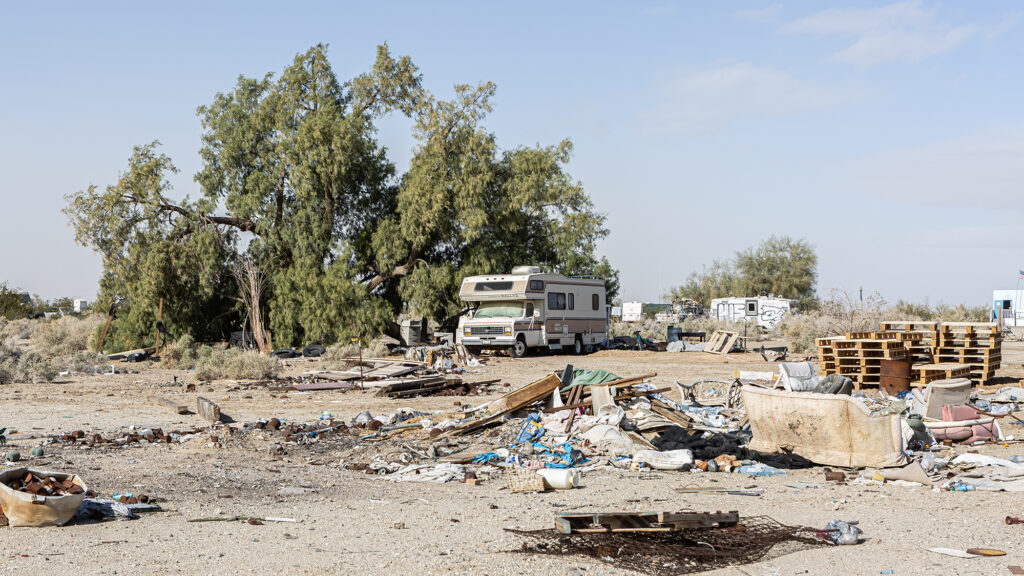
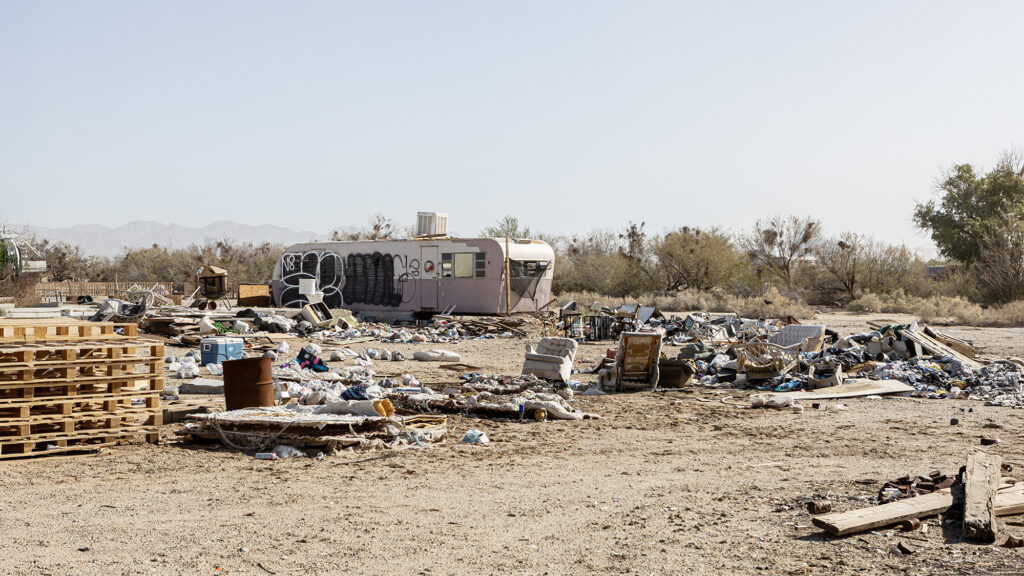
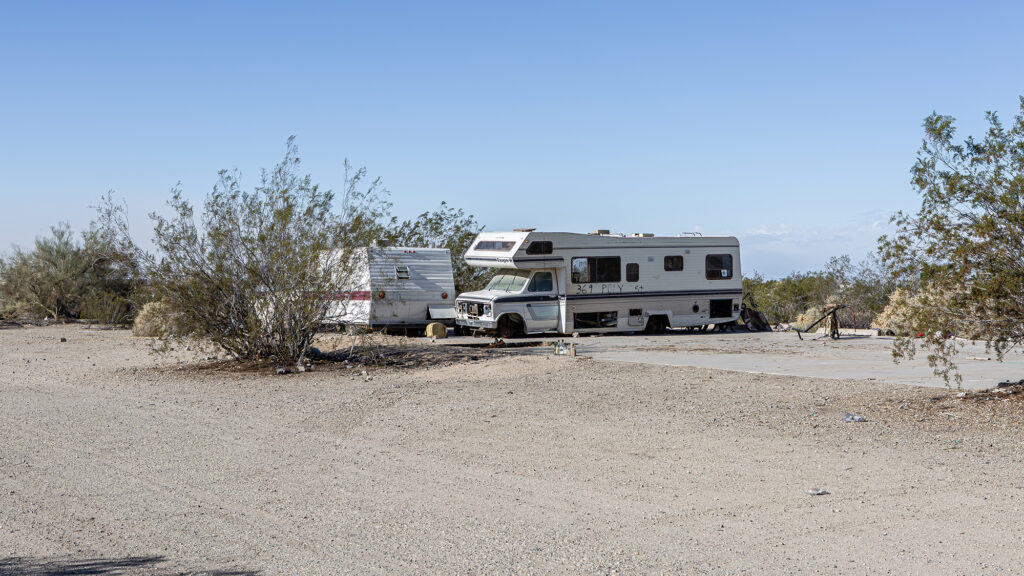
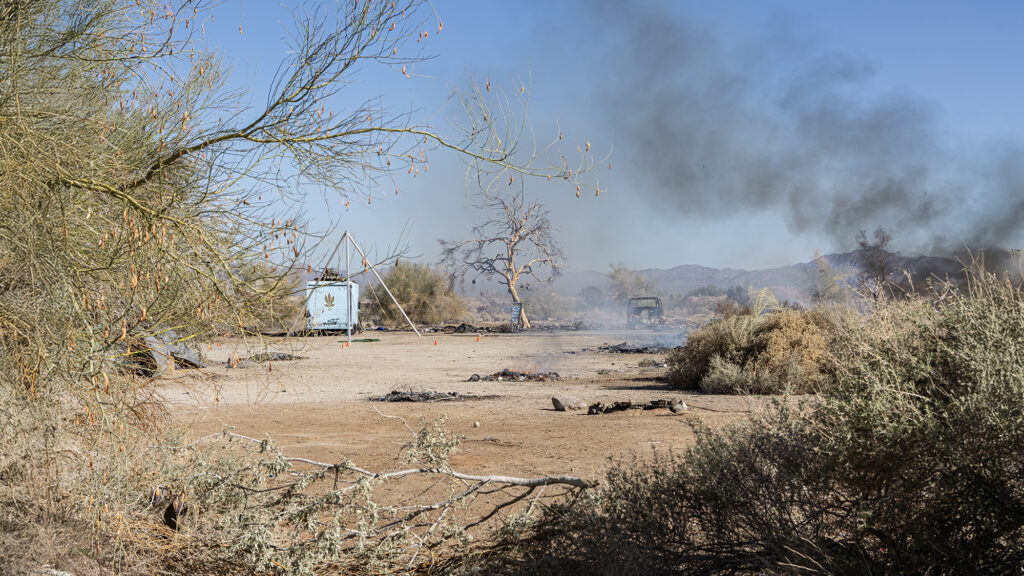
And then: in the distance, a column of smoke. A sign that something was still happening. It pulled me closer.
On the smoldering ground I met T.D. He wore a sweatshirt and shorts, standing with a rake among the smoking remains. His circus had burned down the night before. Arson, he said. A rival group. T.D. was agitated, but friendly. And eager to talk.
He told me he had once been deep in the drug scene. Two dealers had cheated him. He had planned to kill them. The gun was already bought. But at the last moment, he said, God held him back. That was the turning point. Today, he sees himself as the reincarnation of Jesus and leads his own religious movement centered on love, forgiveness, and spiritual enlightenment. Its symbol: a hybrid of lotus and hemp leaf. He spoke of love, humanity, overcoming hate. His voice calm, his gaze soft. In that moment, he seemed to believe every word.
And then – almost casually, out of nowhere – he looked at me and said: “Think about it. If God stopped me from killing those dealers, those criminals, evil people – why didn’t he stop Hitler from murdering millions of Jews?”
I was stunned. What followed was a tirade of hate, full of antisemitism. Loud, angry, incoherent. A moment that disturbed me – and yet captured much of what I found in this place: the gap between ideal and abyss, vision and collapse.
T.D. also spoke of other conflicts: rival groups, feuding religious sects, drug problems. Of East Jesus and West Satan, two communities that had once been one, then split over commercialization. One half renaming itself in protest: West Satan. It was a world of fractures, contradictions.
I took a portrait of him. His face, his story, his double standards – they stayed with me.
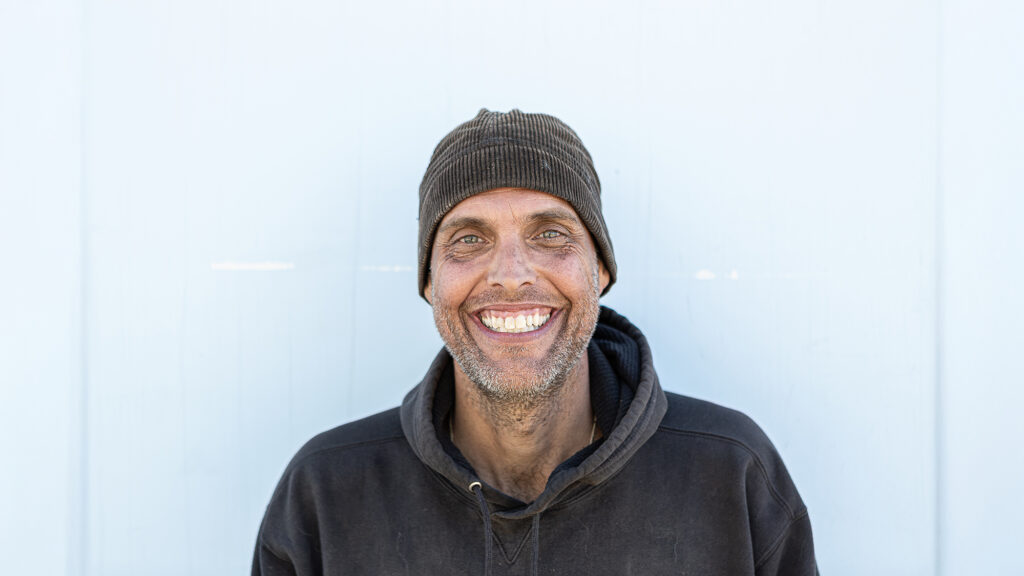
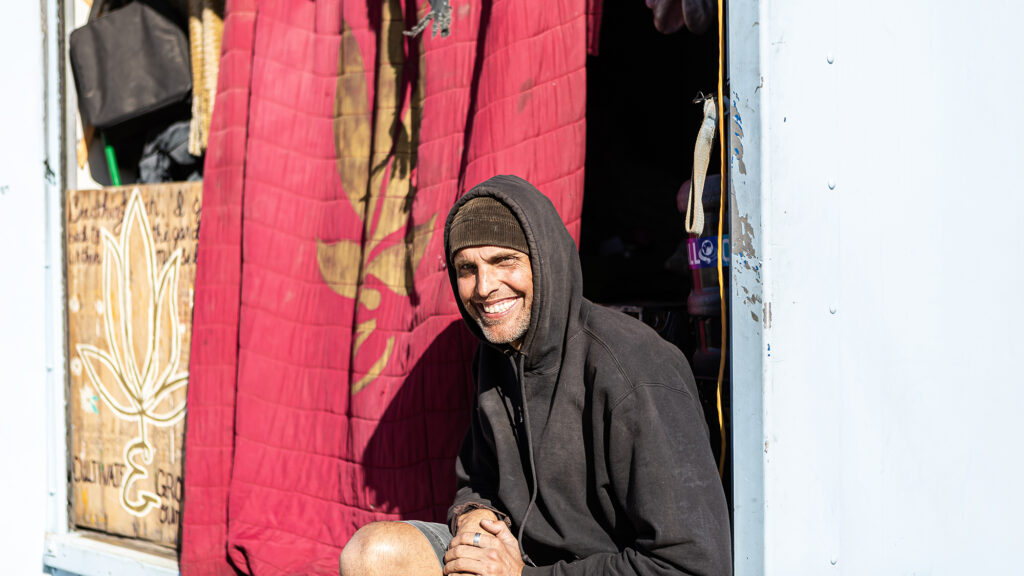
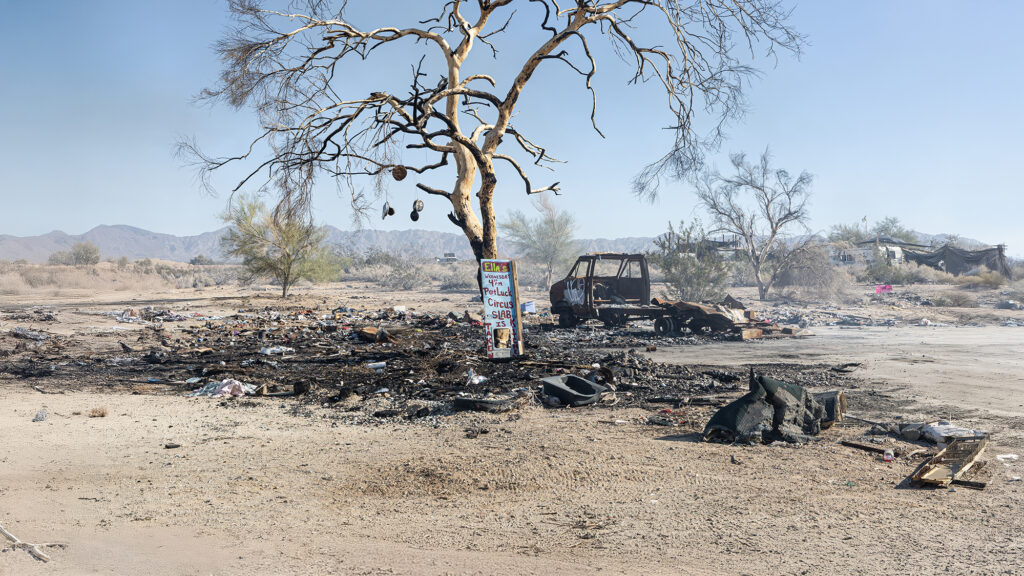
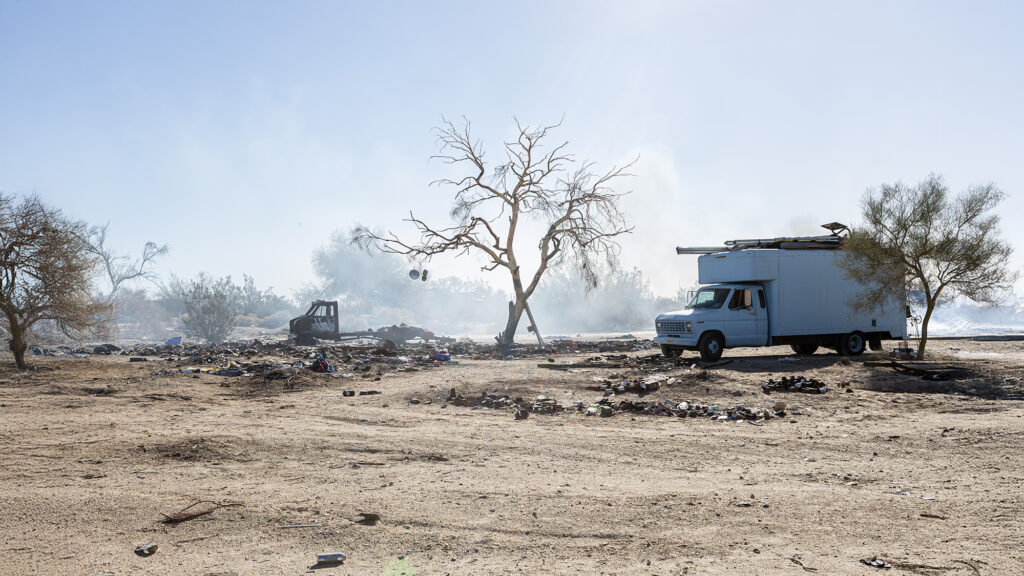
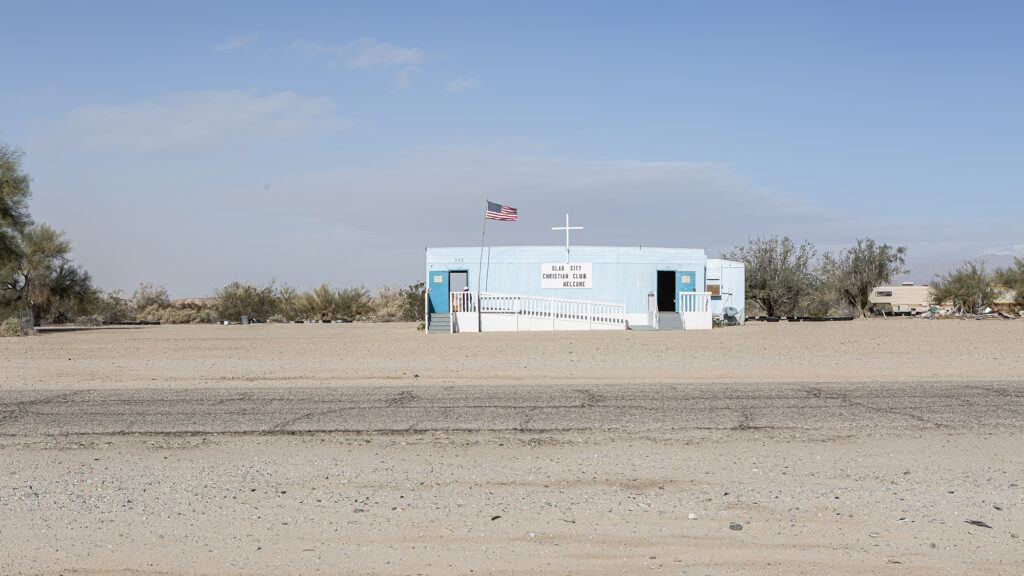
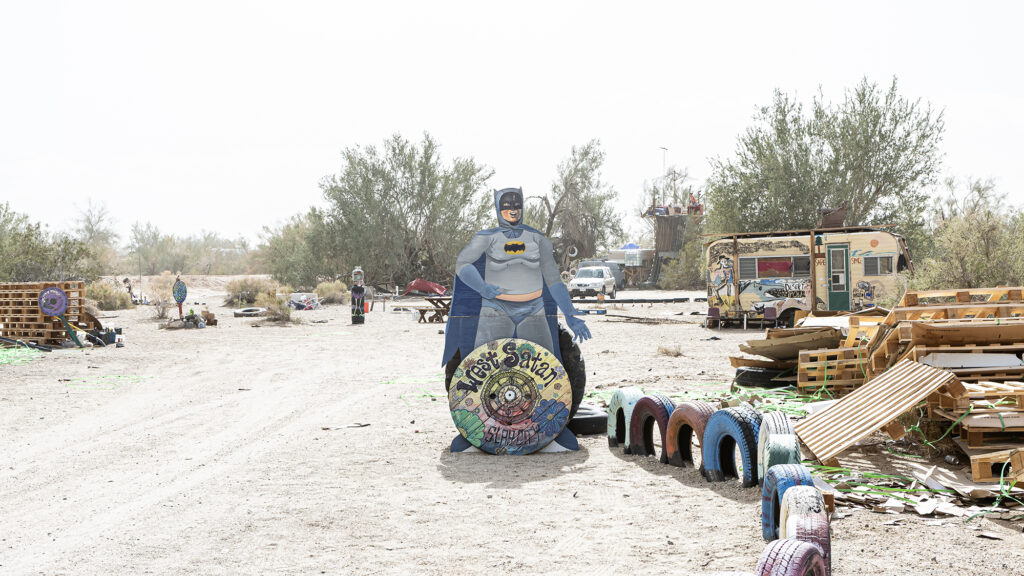
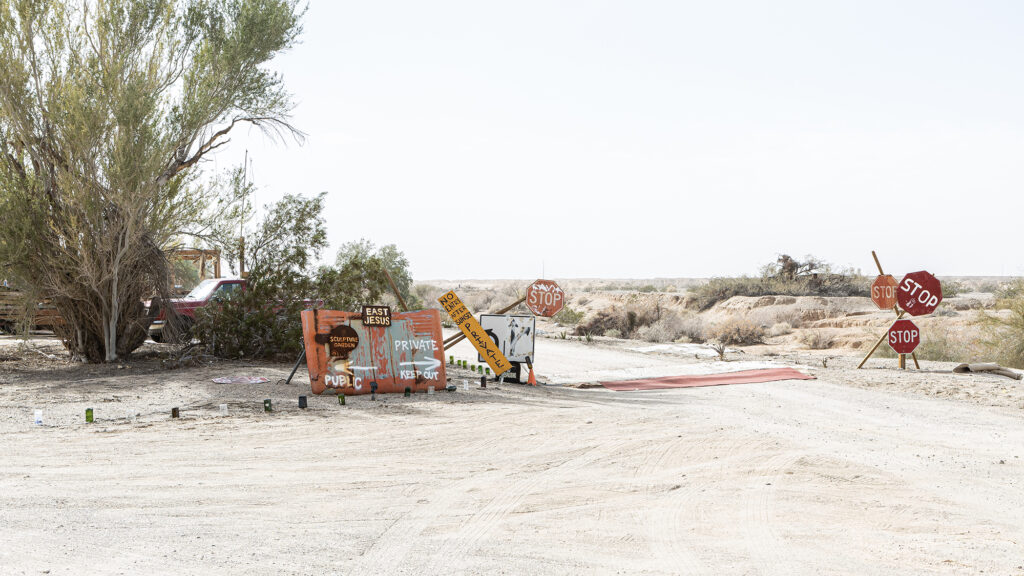
And yet, among all the conflicts and withdrawals, there were other images. Places of wild, anarchic creativity. A small library, carefully kept, in the dust – a fragile contrast to the chaos.
East Jesus: a terrain of scrap and imagination, full of installations and sculptures, wild, intricate, impossible to finish. A place you could wander for hours, because behind every corner was something new.
The Range: a stage cobbled together from old buses and wood, raw and imposing. Empty and ghostly by day, by night it became the beating heart of Slab City. The whole camp gathered: open mic, small bands, fire pits. A desert concert hall where, for a moment, a sense of community was real. For the first time, Slab City didn’t feel fractured, but connected – raw, broken, yet alive.
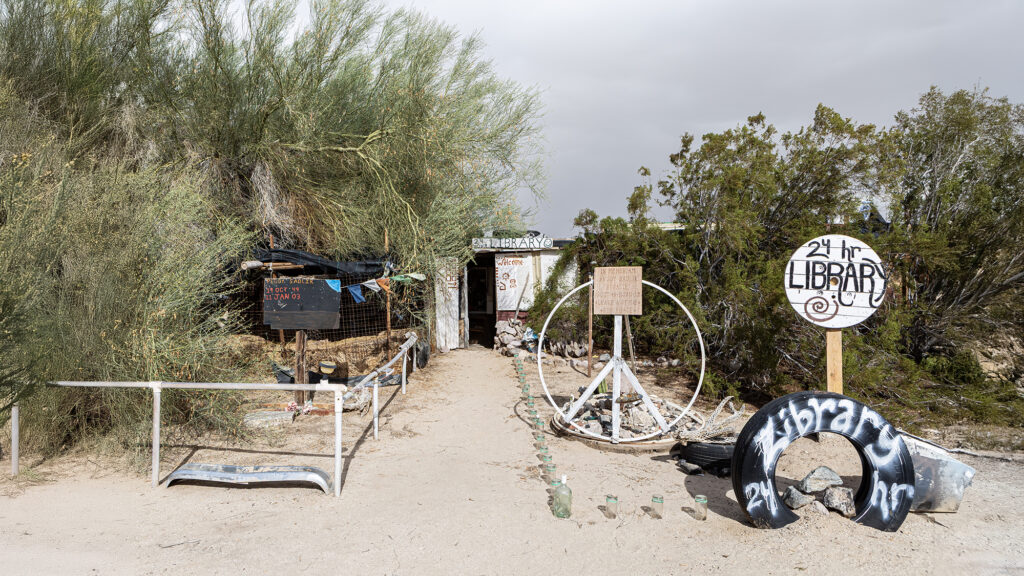
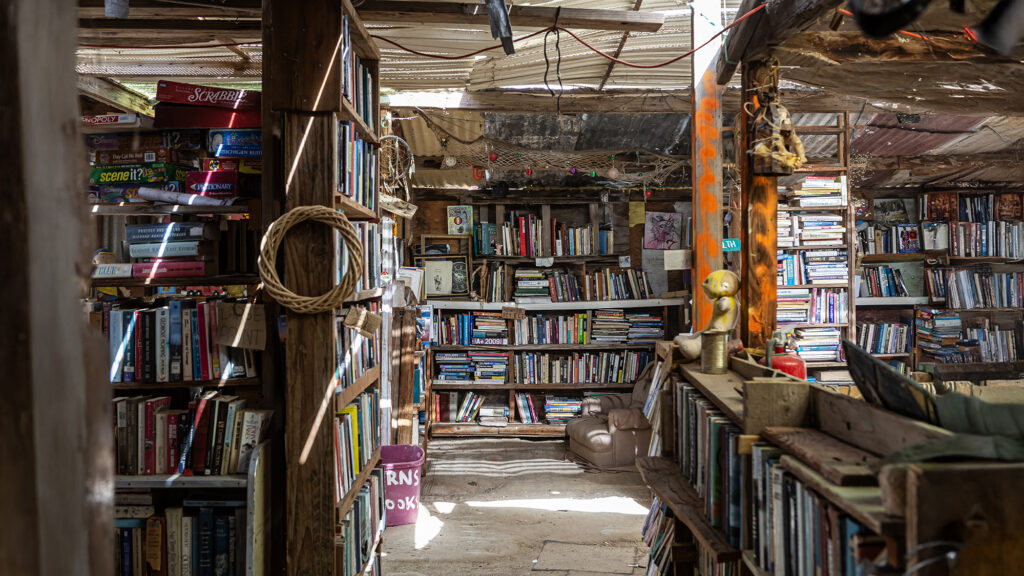

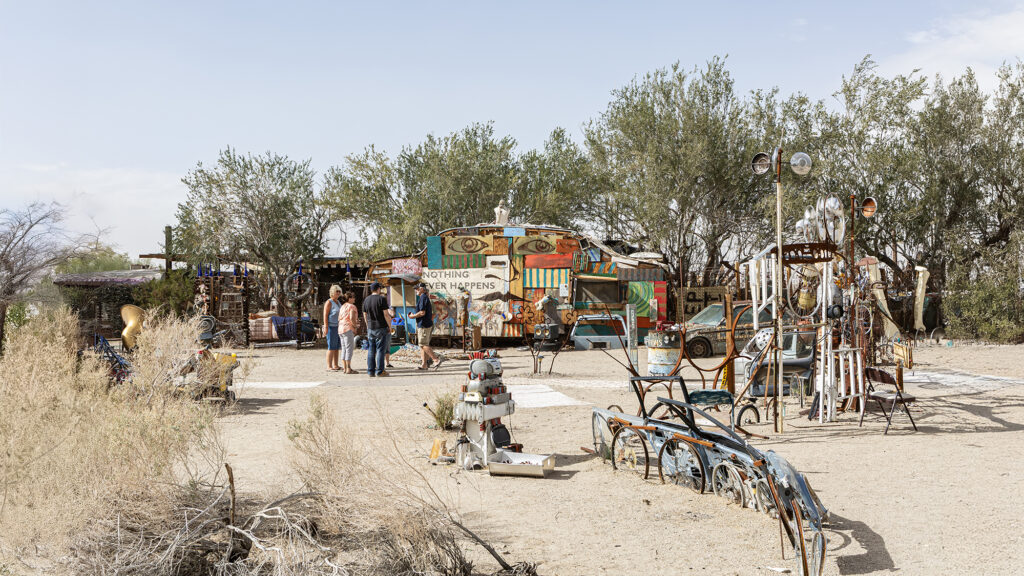
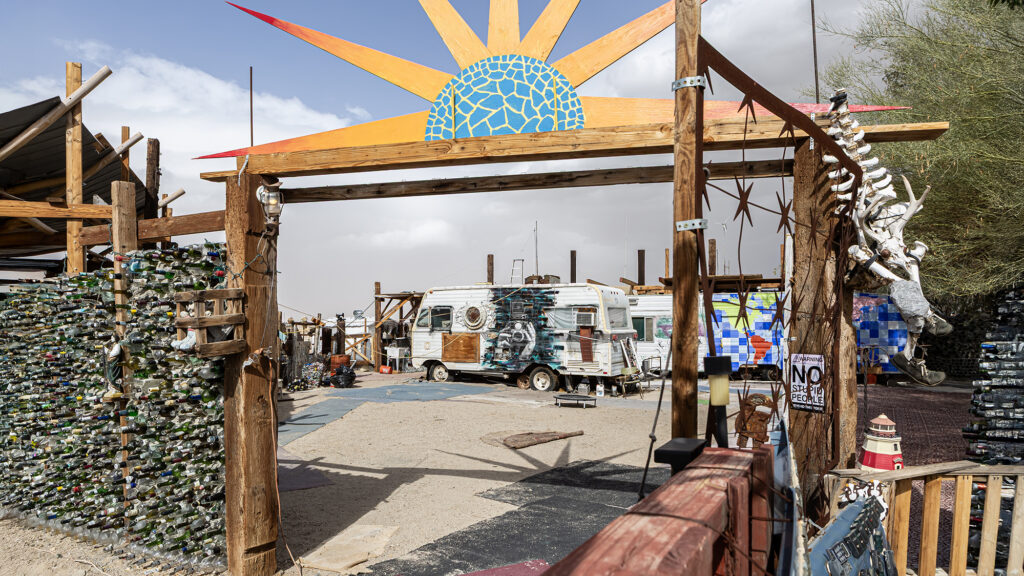
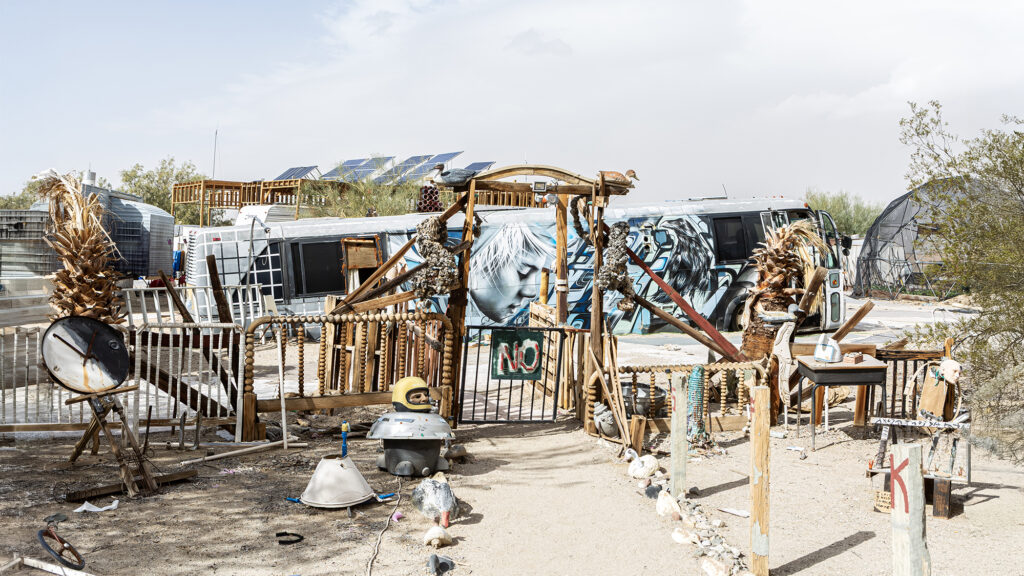
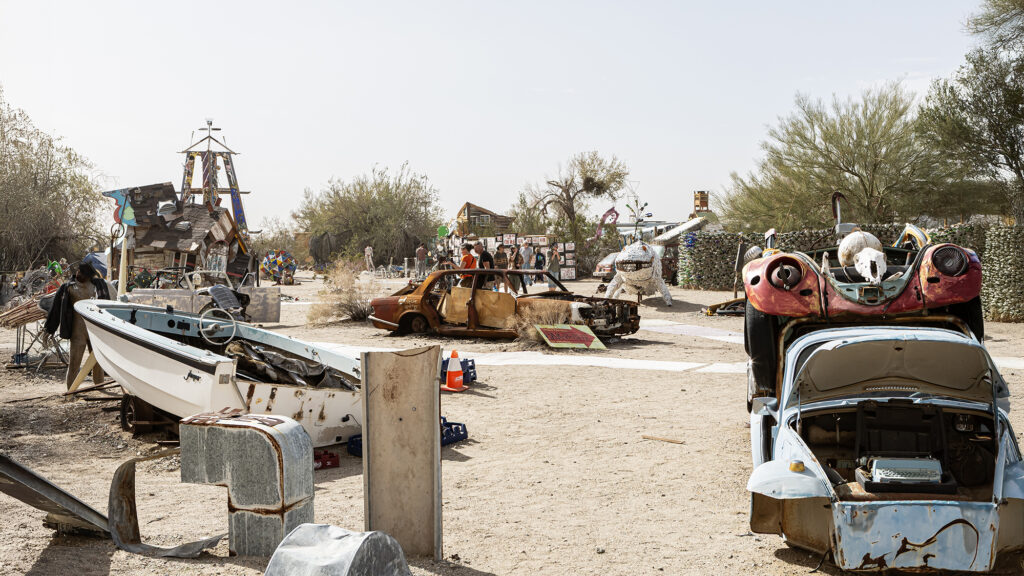

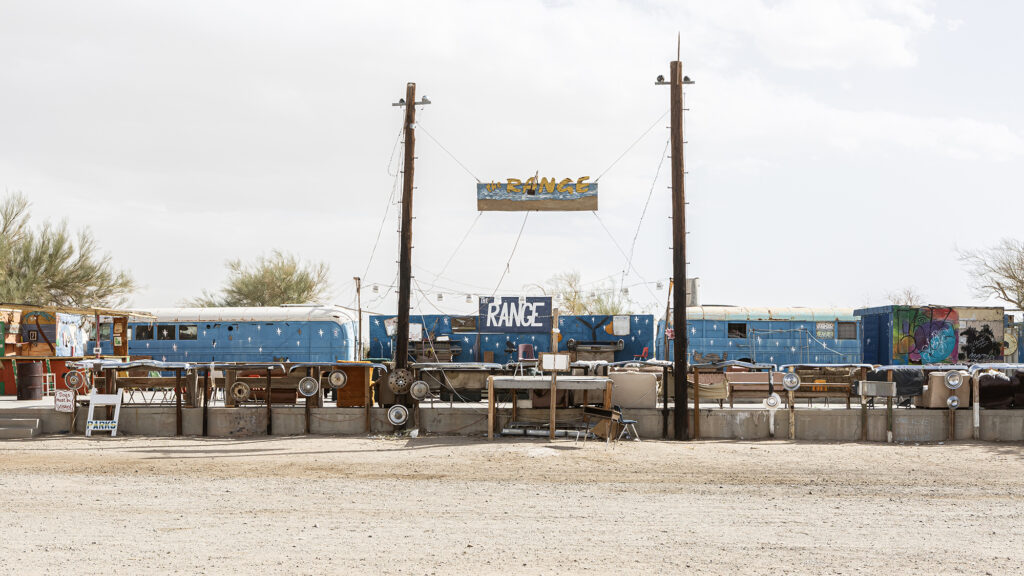
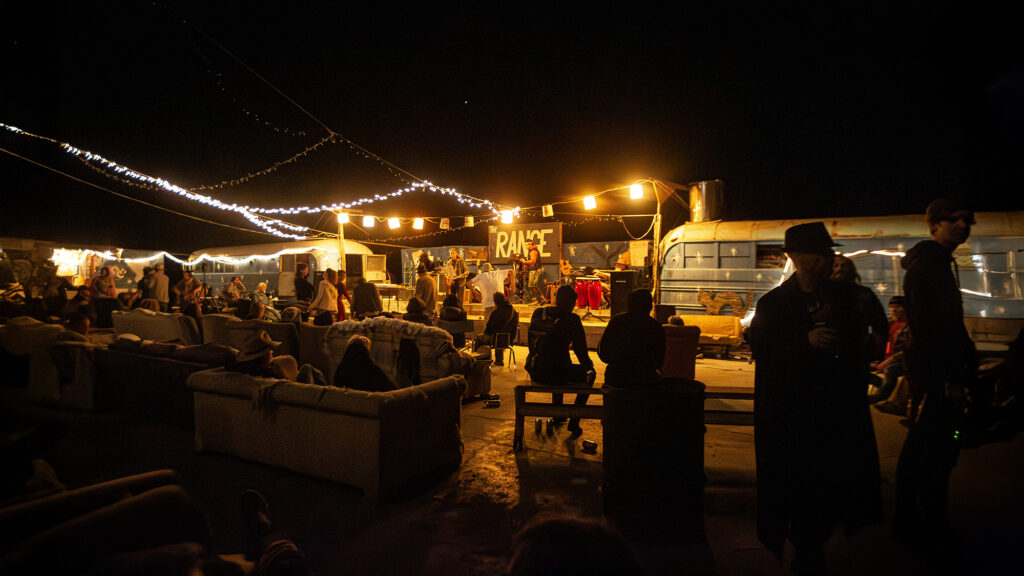
In Slab City we set up camp at the old military pool – now a skatepark, once part of Camp Dunlap’s swimming facilities. There lived BarkBark, a man who had spent about 25 years in an old school bus, a dropout who had fled the big city. He didn’t want photos, but he liked that we asked before staying and gave us permission to set up camp by the pool. Not without a warning: if we heard screaming or strange behavior, it was the meth.
The pool was a trash heap. So we started cleaning. We stuffed the garbage into two rusting car wrecks that stood inside the basin, turning the mess into preparation for a ritual. That evening we set them alight – a fire that was both cleansing and destructive.
And with the flames came another moment. At the very beginning of the trip, in Portland, we had bought legal weed – at the time a novelty in the U.S., unthinkable in Germany. Since then we had carried it with us, across state lines, sometimes through places where it was strictly illegal. The whole time we waited for the right moment, the right situation.
Now it had come. In this surreal setting, between junk fire and desert stars, it suddenly felt right. We put on Light My Fire by The Doors, leaned back, stared into the flames, breathed deep. For a brief instant, everything was exactly as it should be. Somewhere between madness and peace.
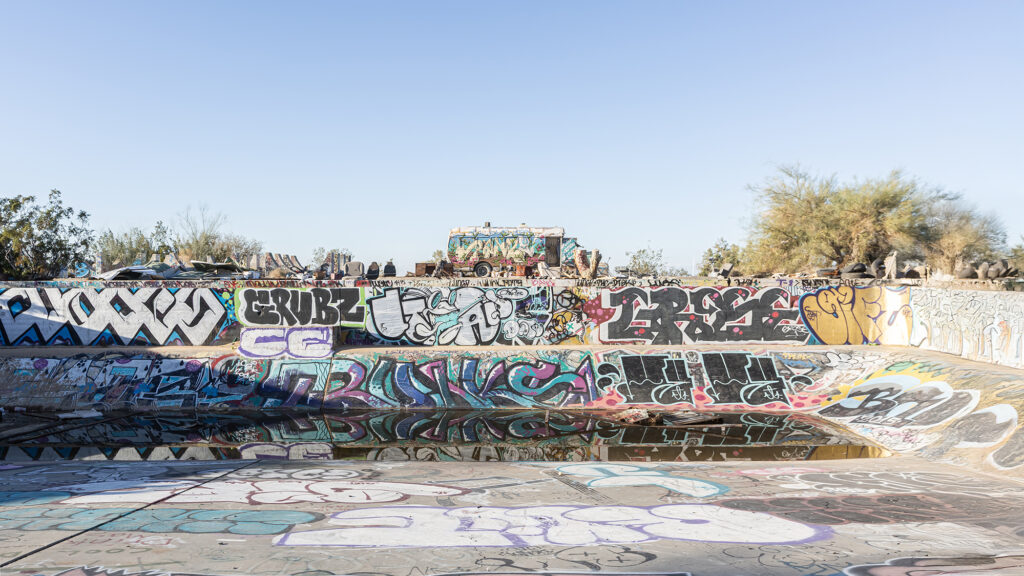
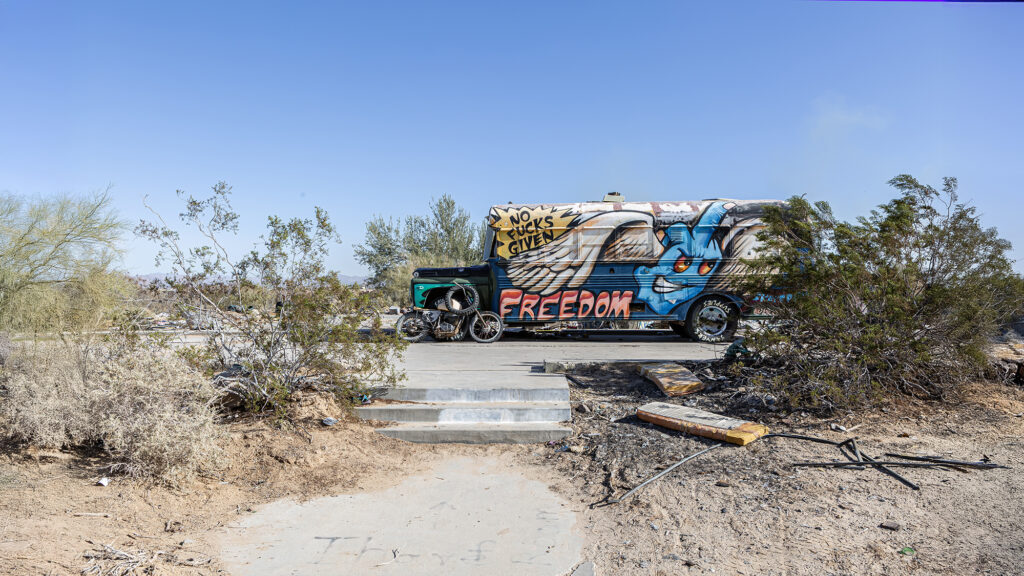
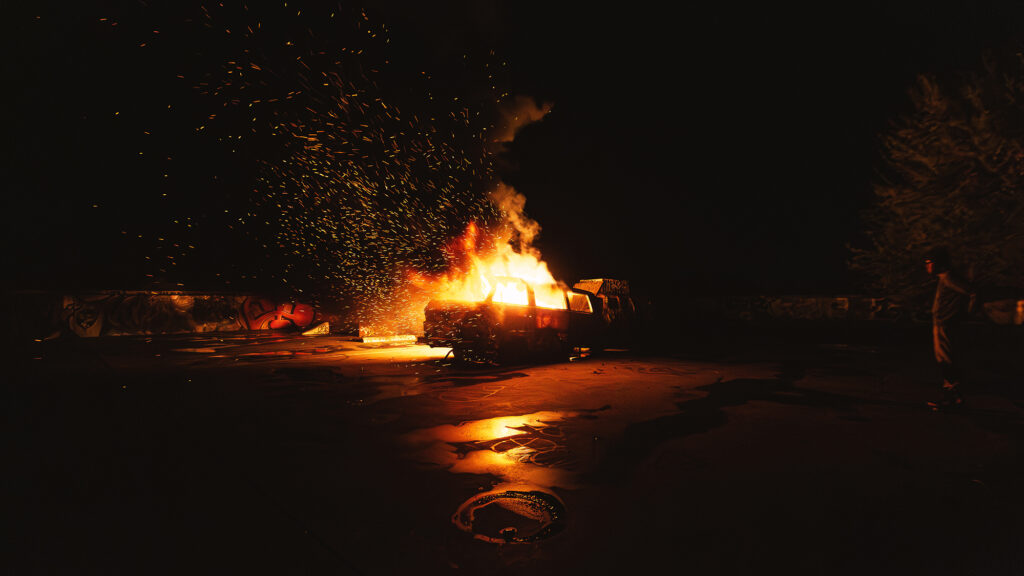
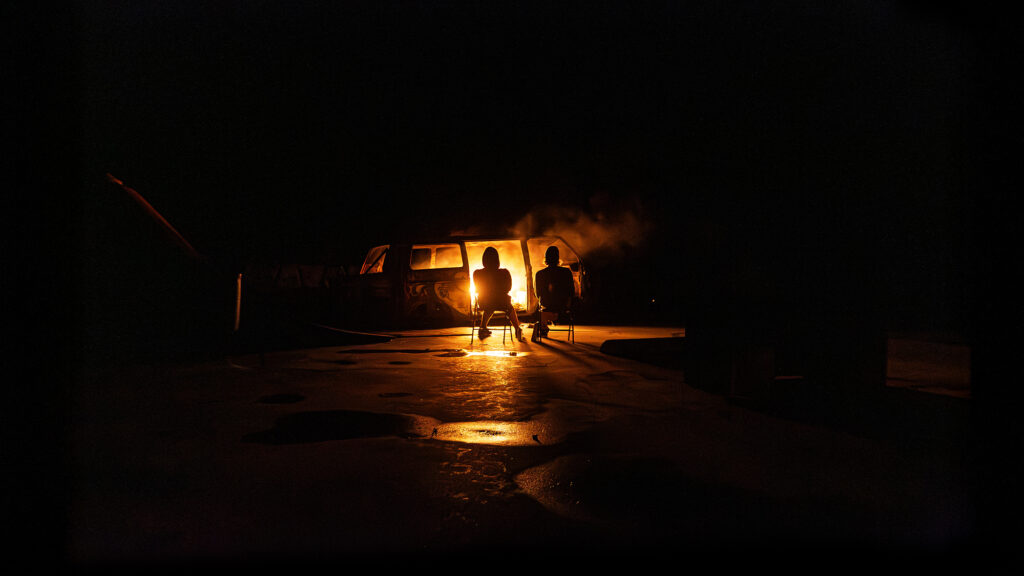
Slab City was no romantic refuge for free spirits, but a torn place full of contradictions – between utopia and dystopia, inspired chaos and repellent decay. And yet, maybe because of that, it became one of the most unforgettable stops of the journey.
The next day we moved on – dusty, tired, silent, and somehow a little clearer in our heads.
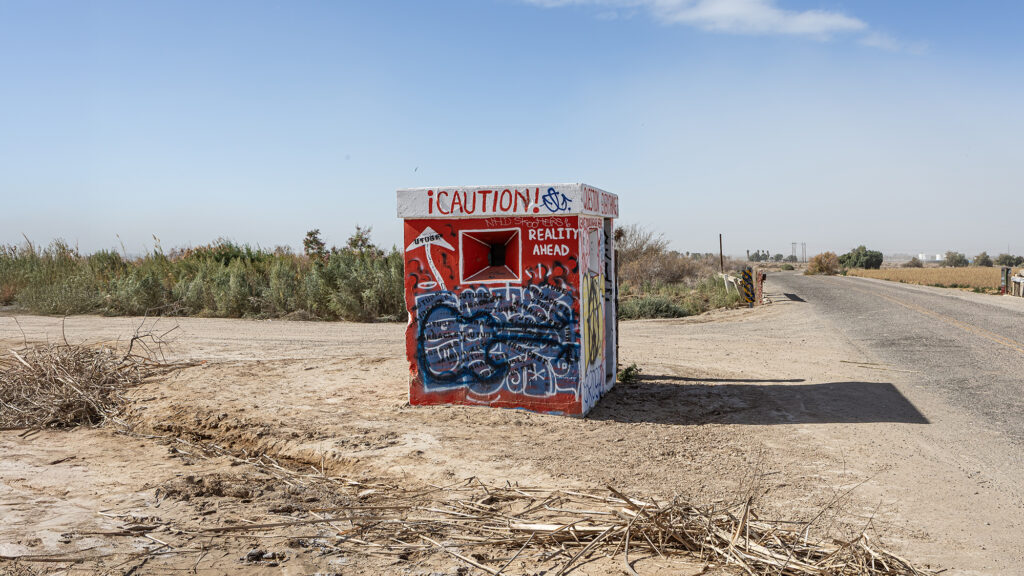
For further reading
If you’re interested in more stories from my USA road trip, here’s a small selection of posts published so far:
If you’d like to learn more about the history and the unique places of Slab City, here’s a collection of further articles and background information:
- Wikipedia – Slab City
Overview of the history, structure, and current situation of the “cityless” desert settlement in California. - Wikipedia – Salvation Mountain
Background on Leonard Knight and his colorful monument at the edge of Slab City. - East Jesus – Official Website
An art and living project in Slab City that has been continuously growing since 2007. - Spaces Archives – East Jesus & The Range
Documentation of the two most well-known cultural sites in Slab City. - Document Journal – Slab City, the artistic outpost where outsiders find home
Reportage on art, subculture, and everyday life in Slab City. - Antoine Aboudiwan – Free Music Under the Stars
Article on The Range, the open-air stage founded by William “Builder Bill” Ammon. - California Through My Lens – East Jesus Art Community
Travel report with photos and impressions of the East Jesus site. - HowStuffWorks – Slab City
Historical overview of how Slab City emerged on the grounds of the former military base Camp Dunlap.
